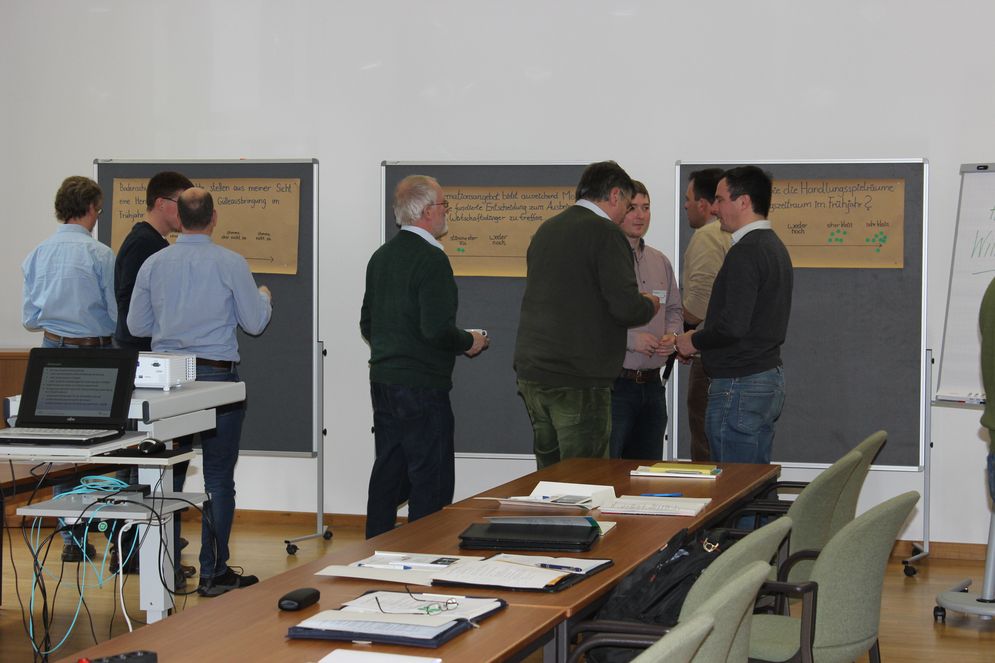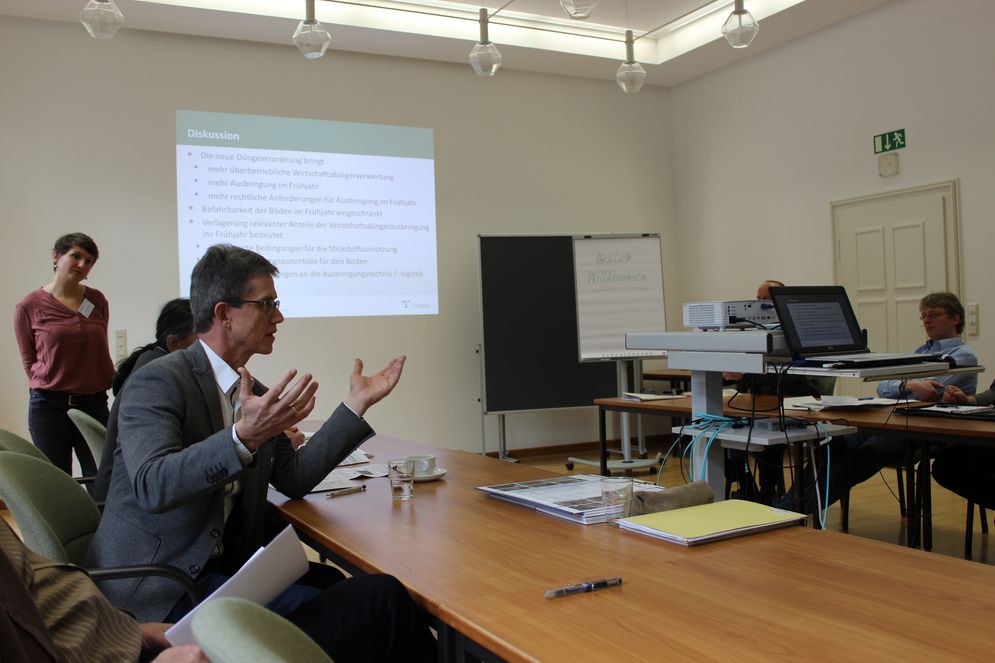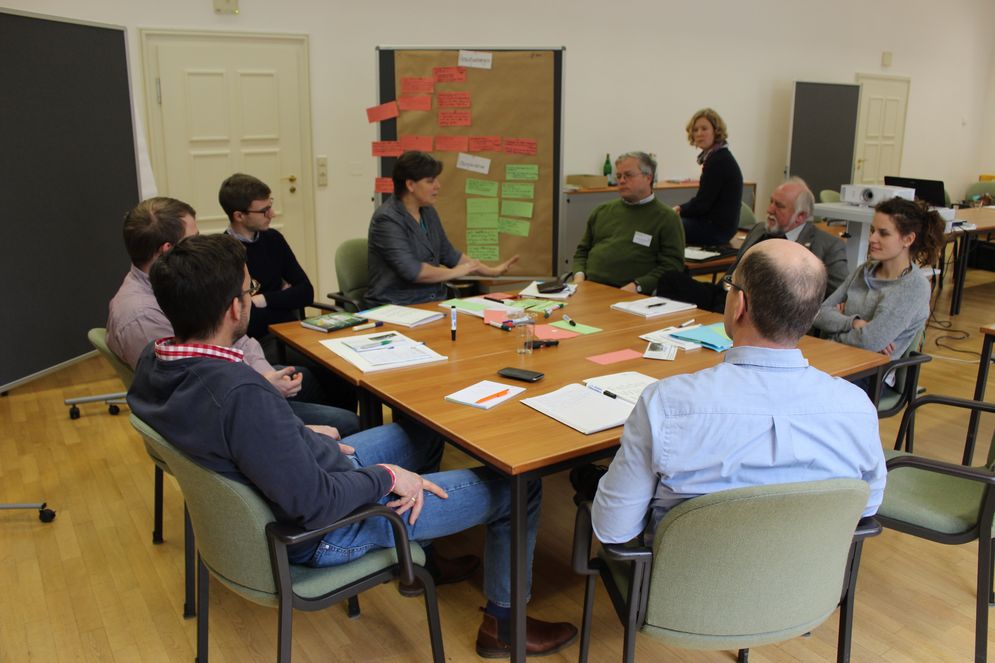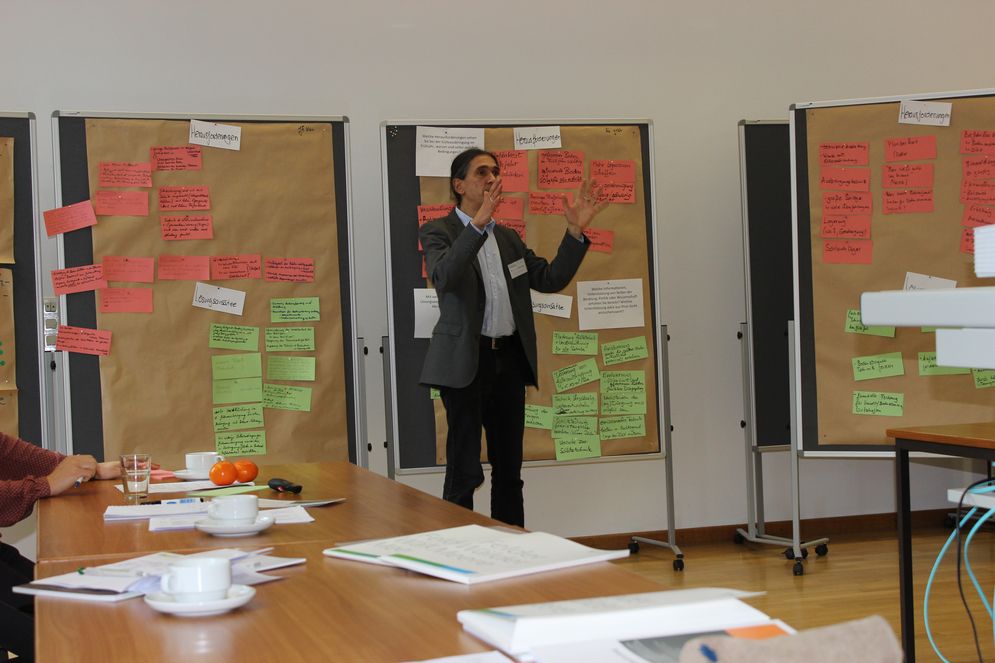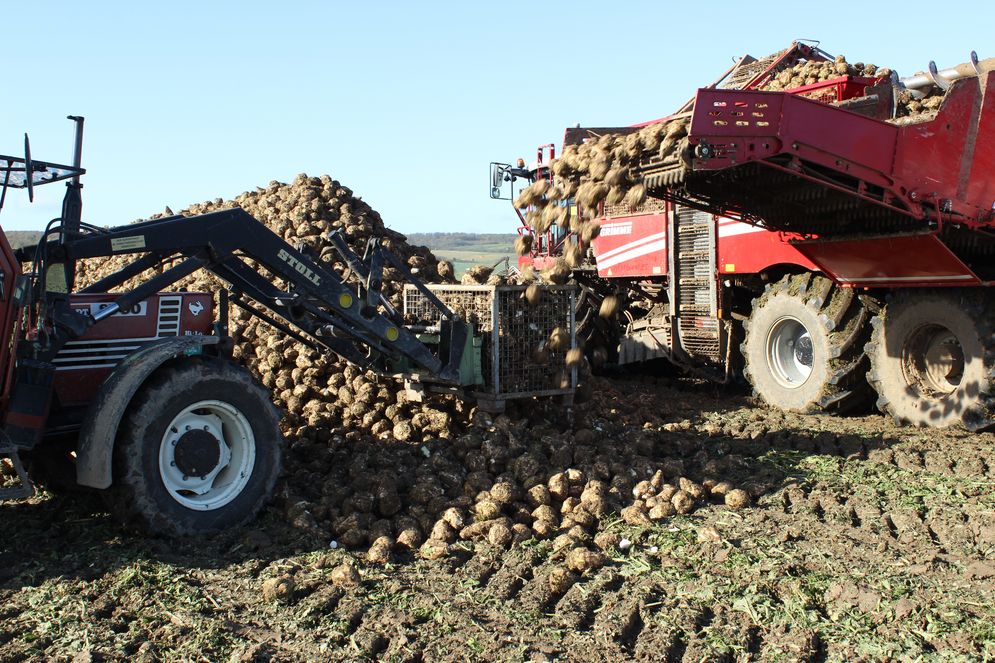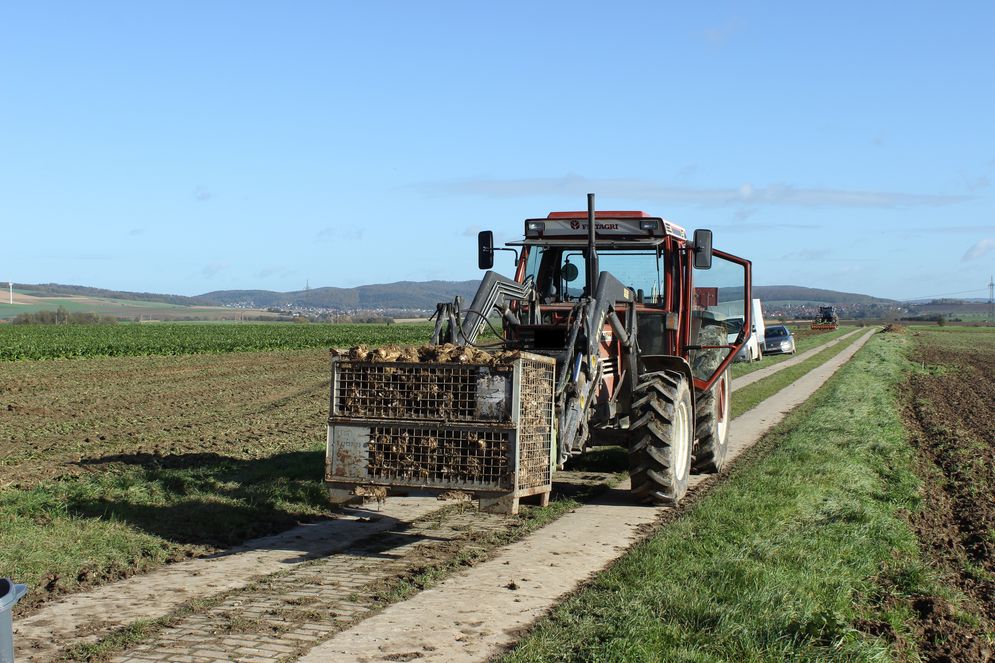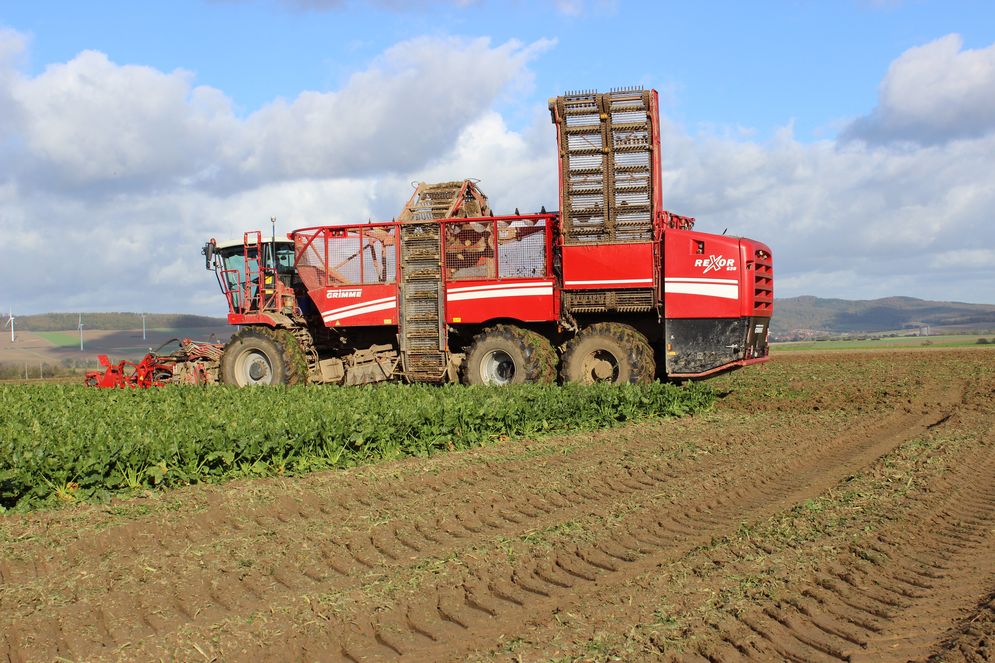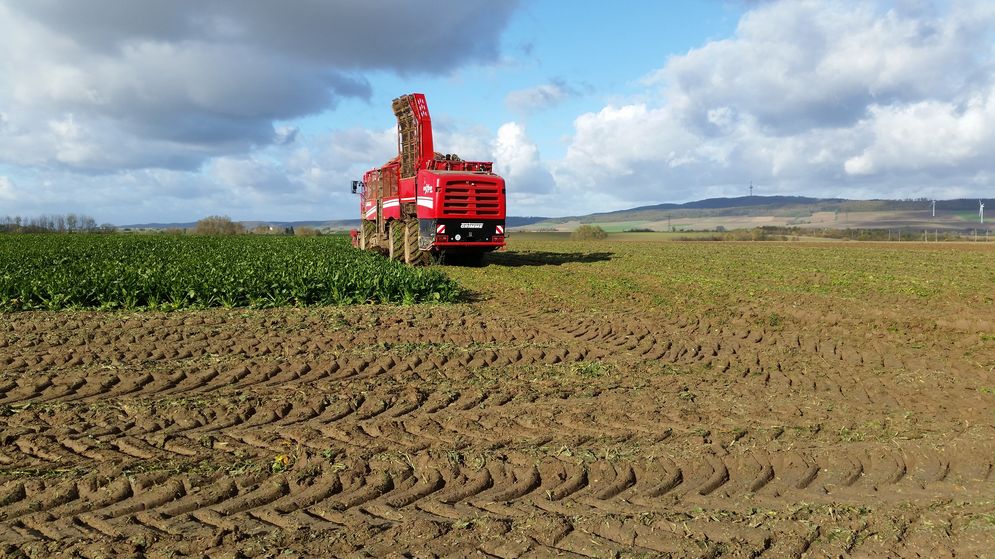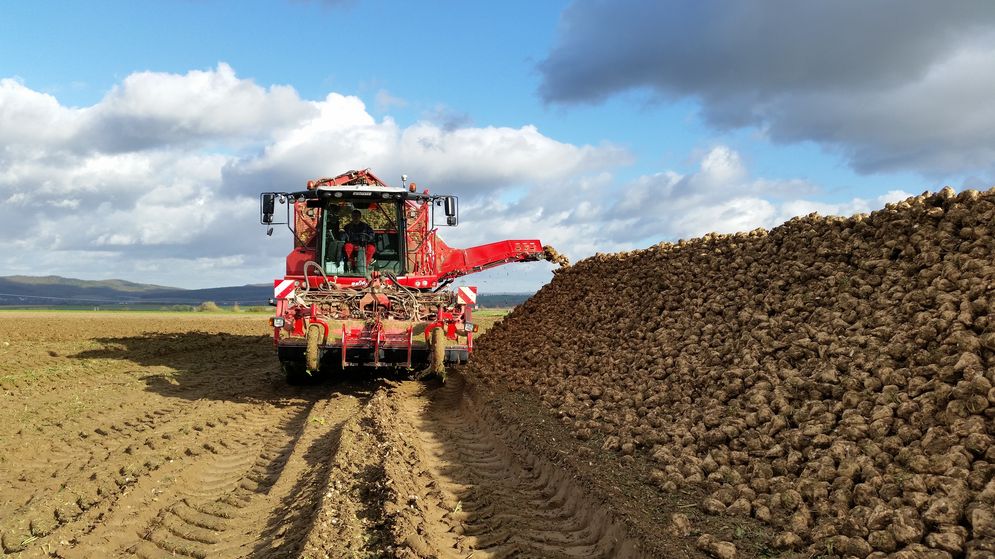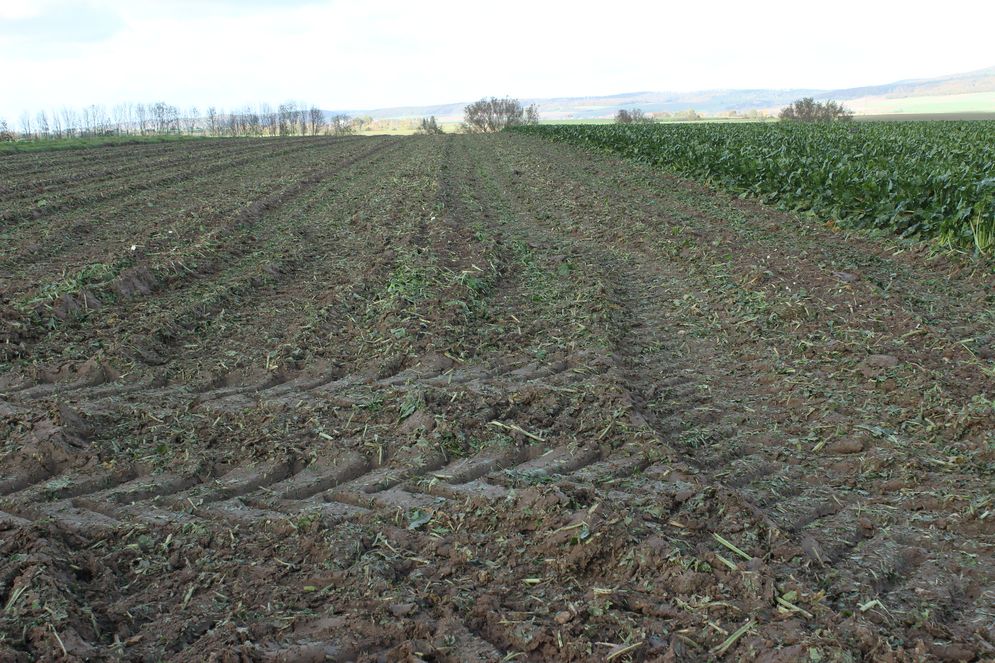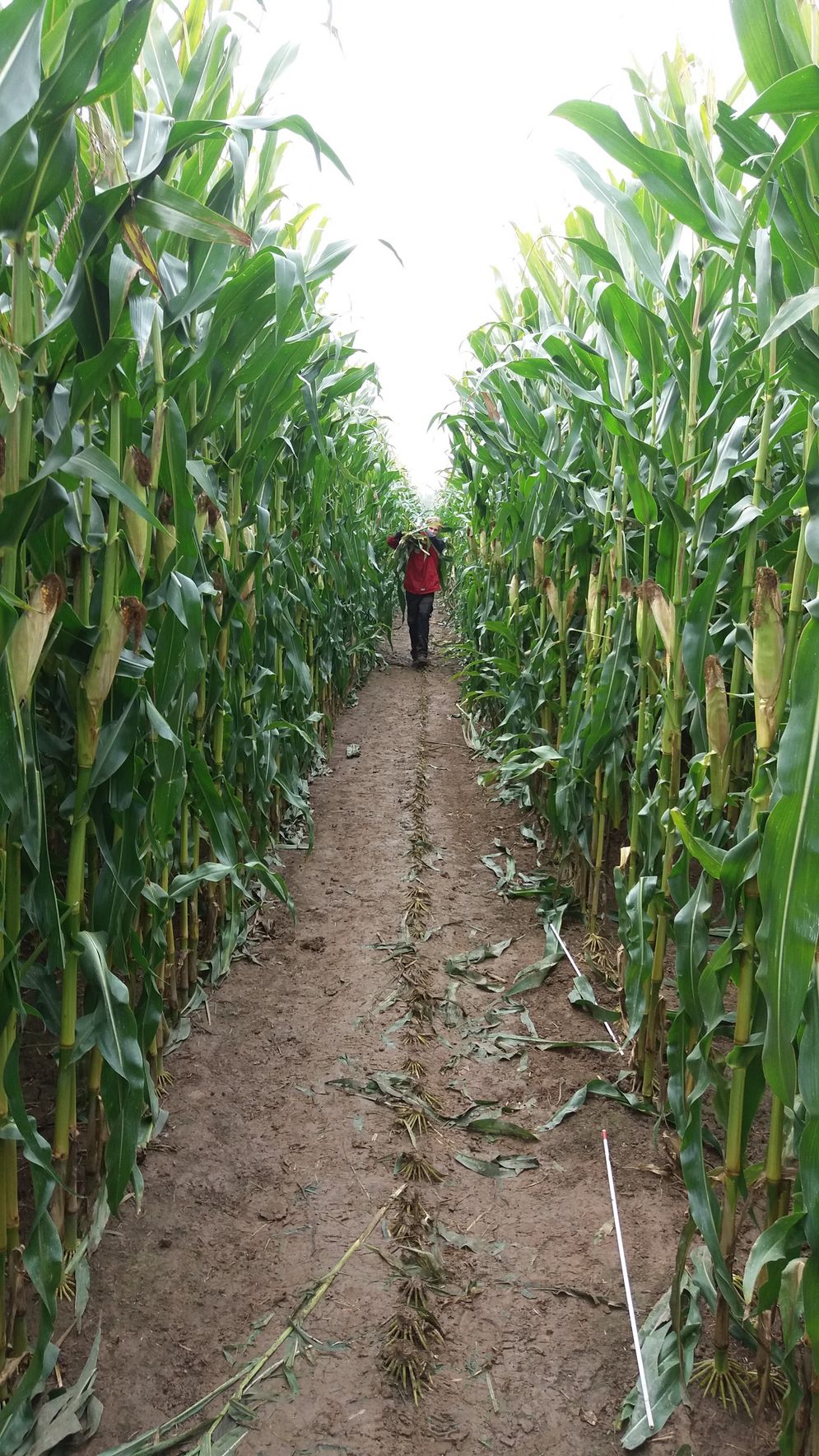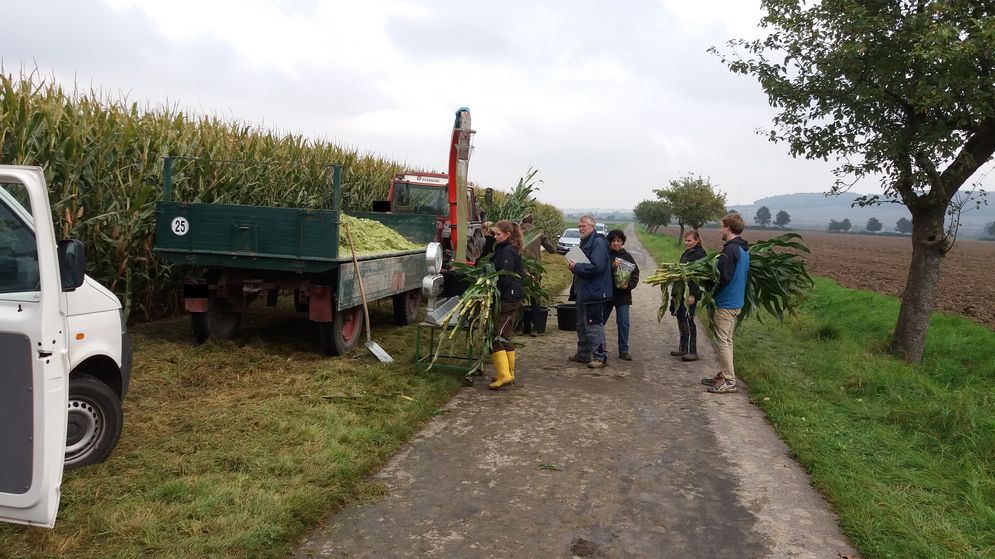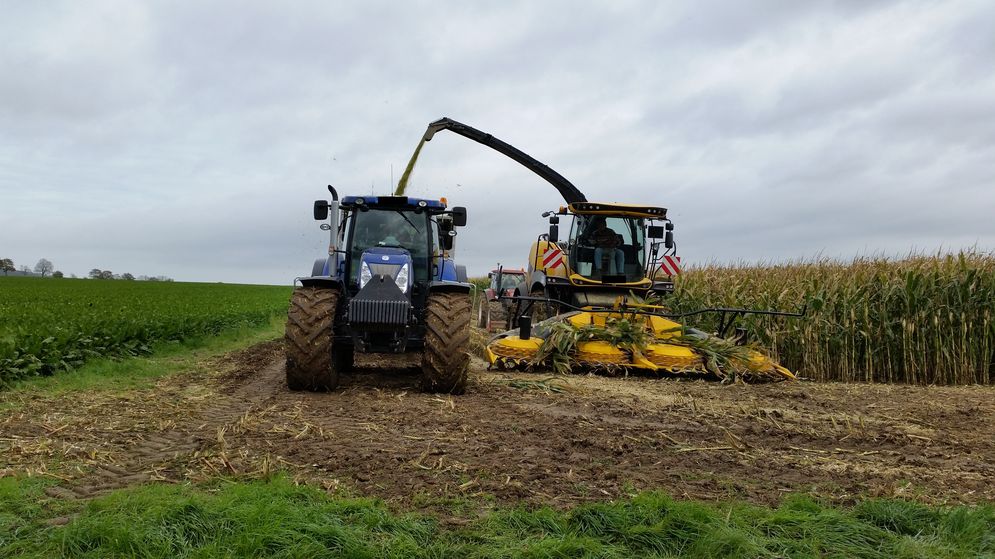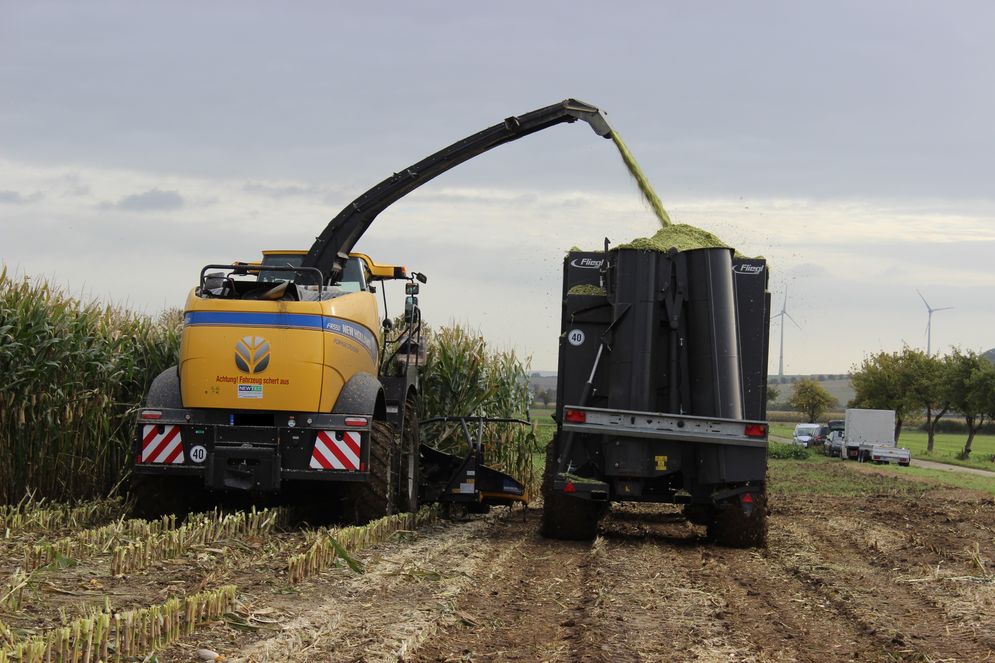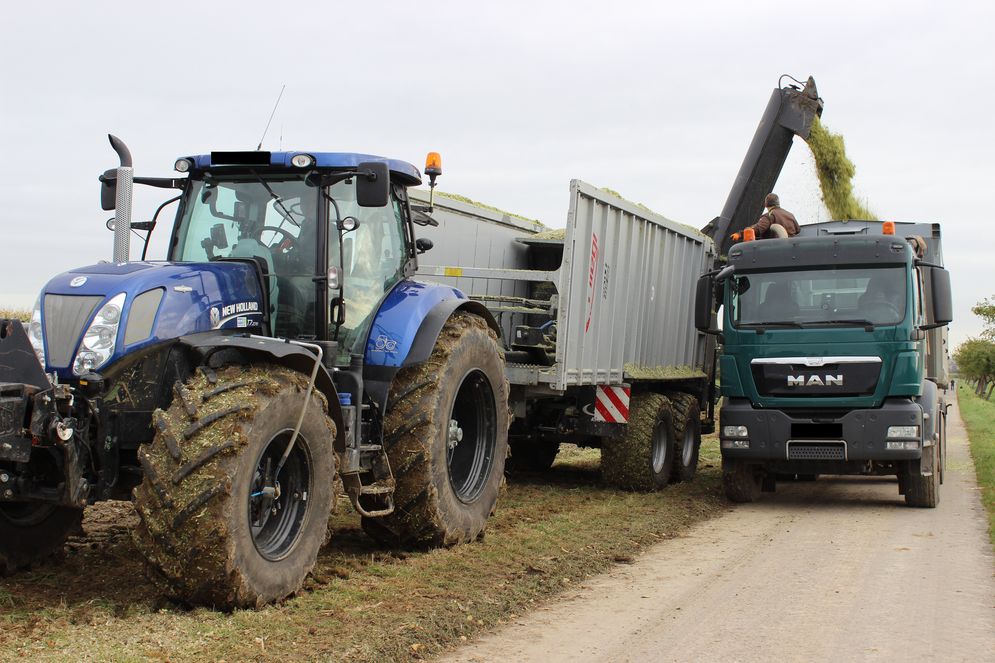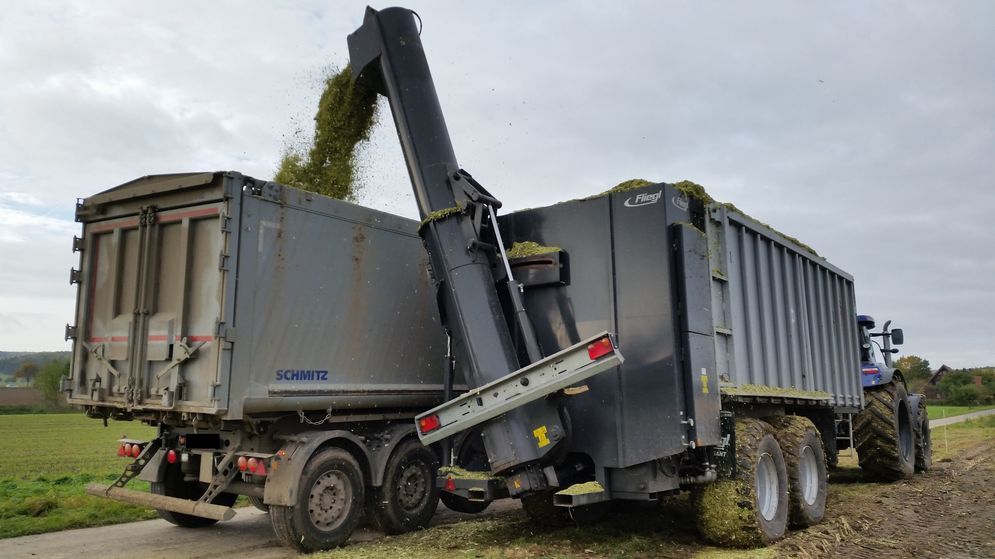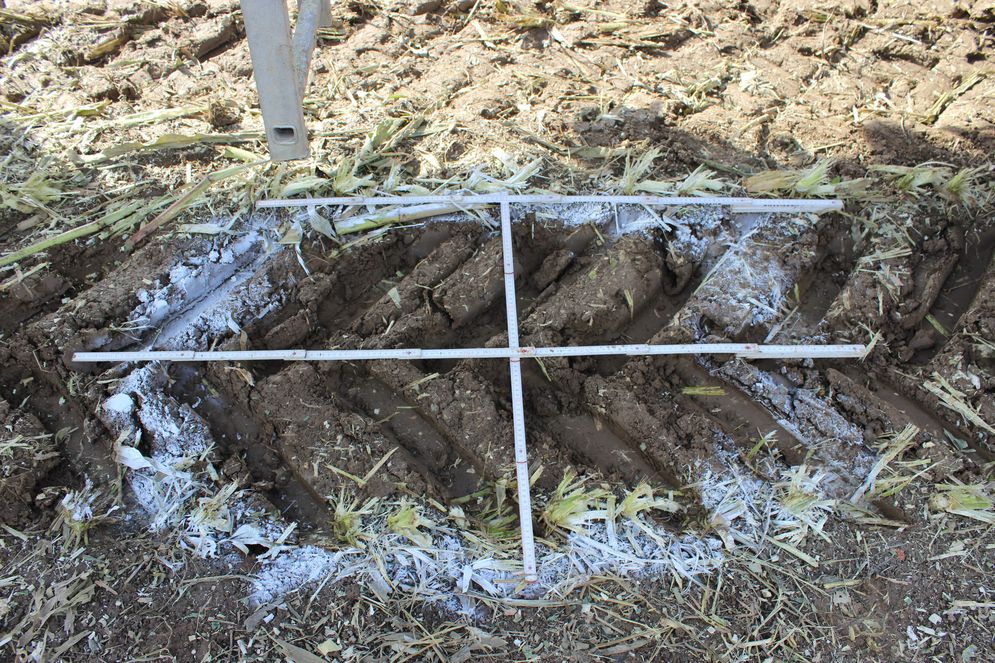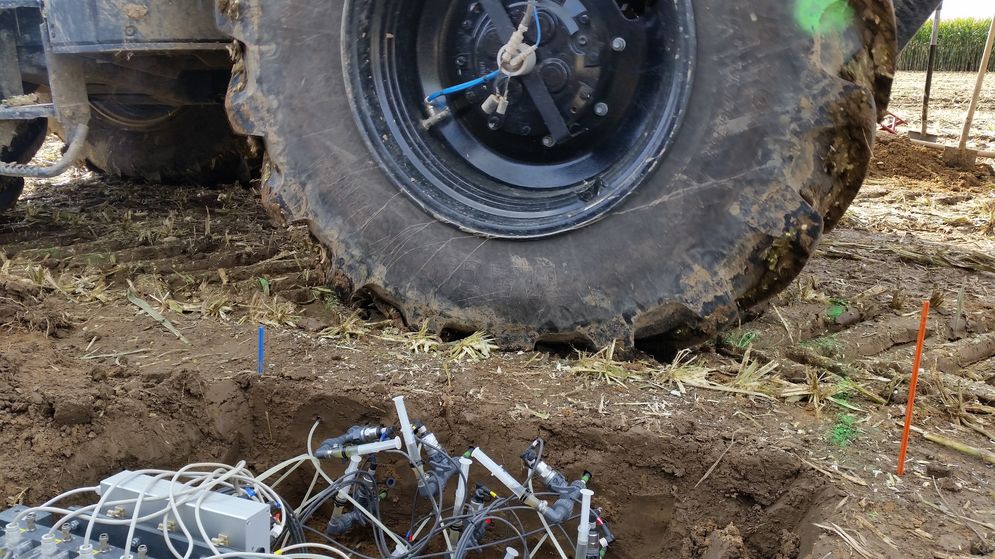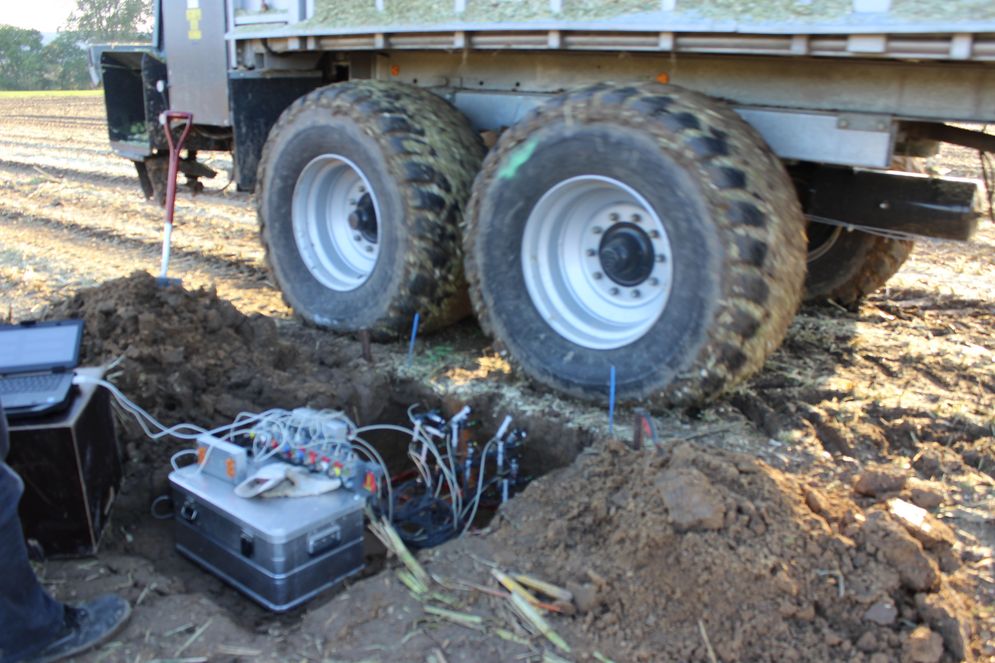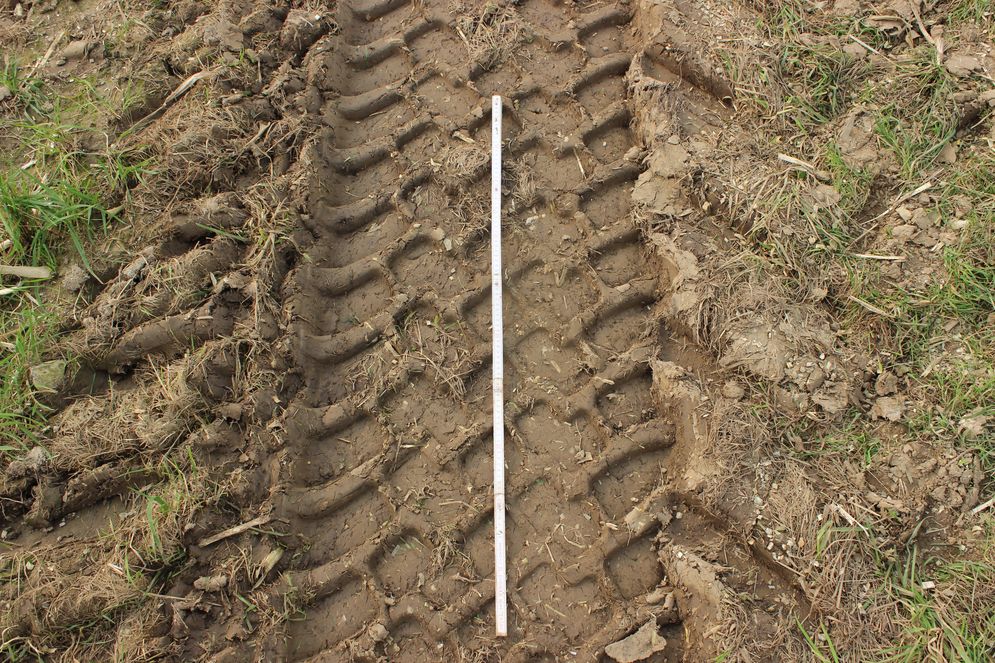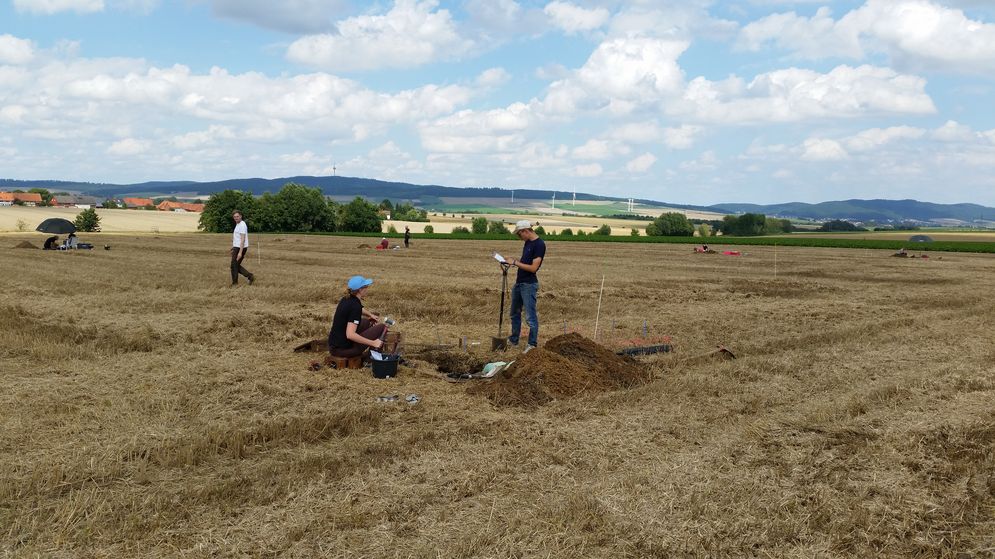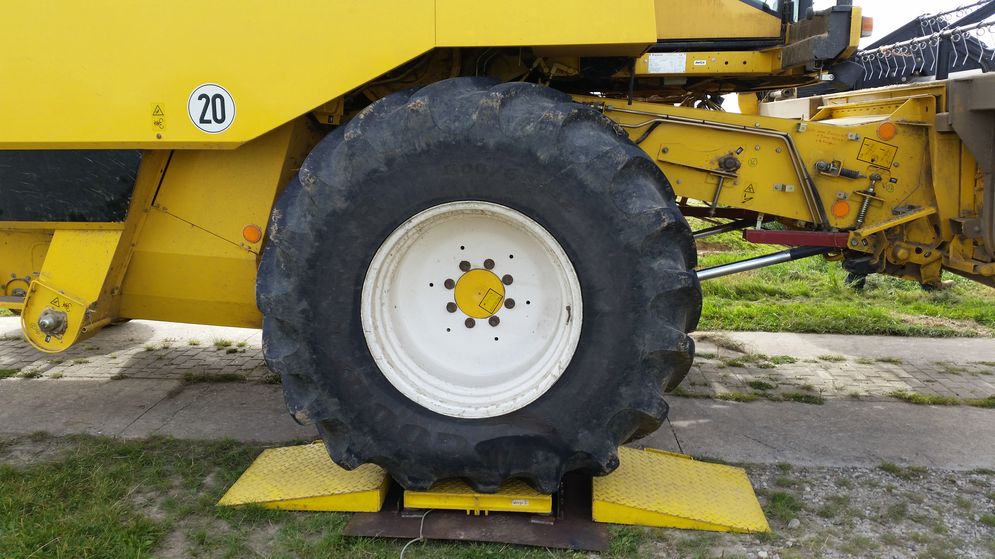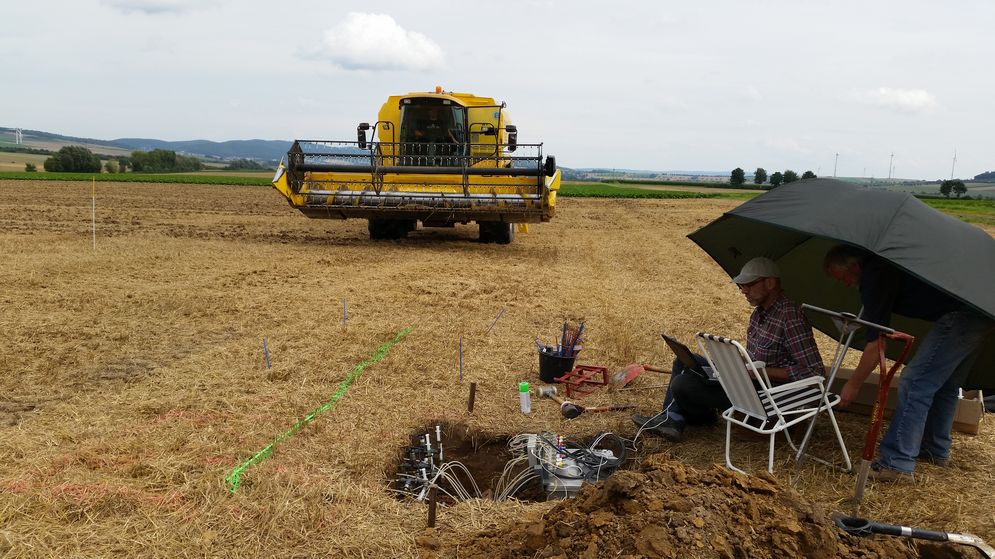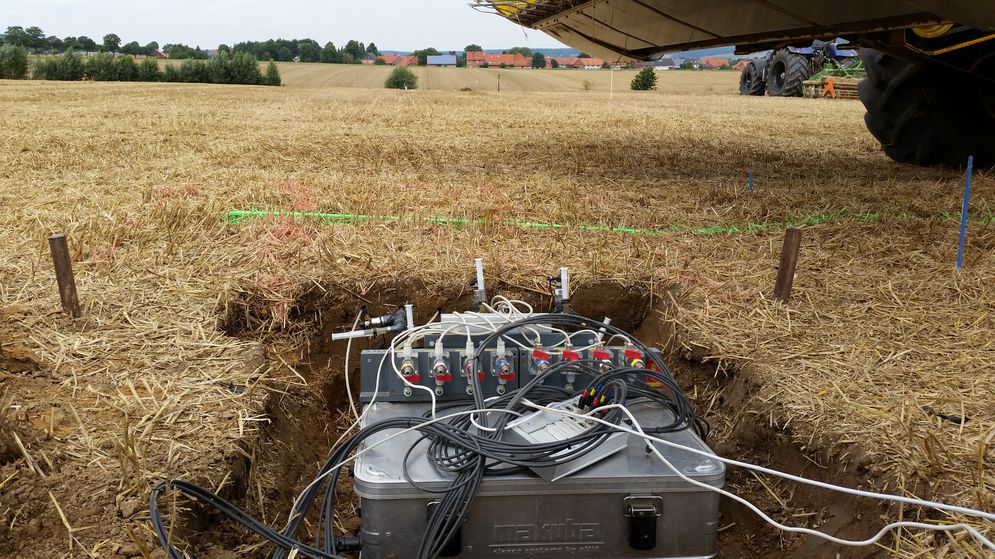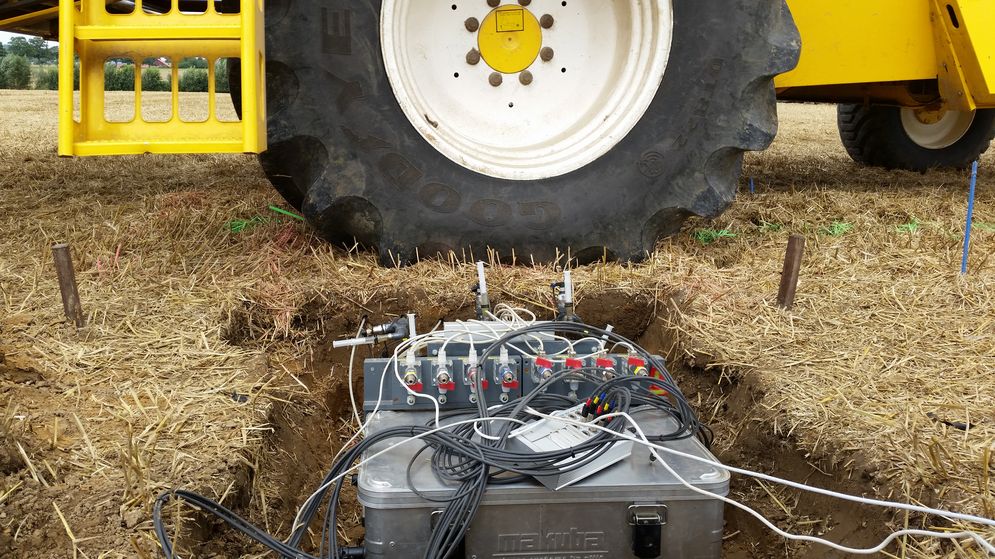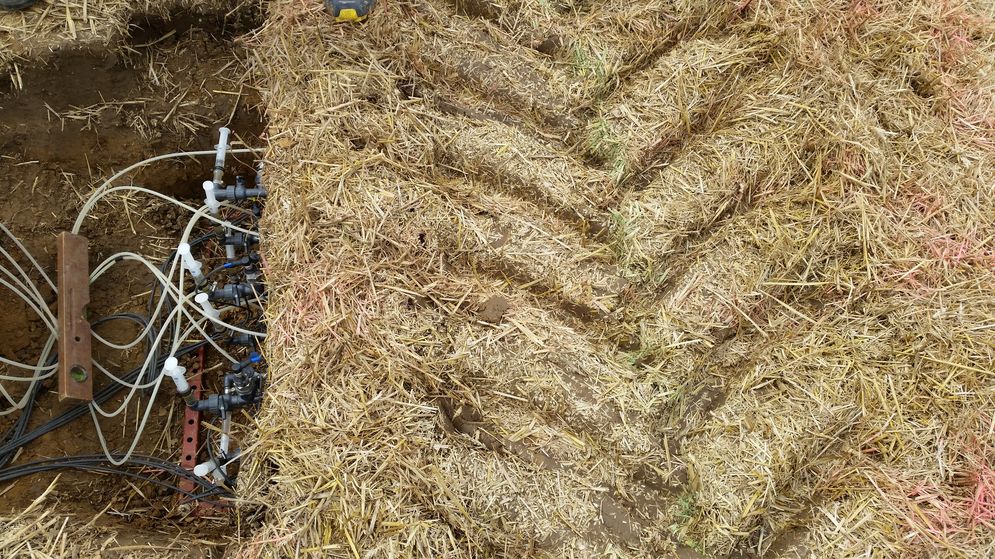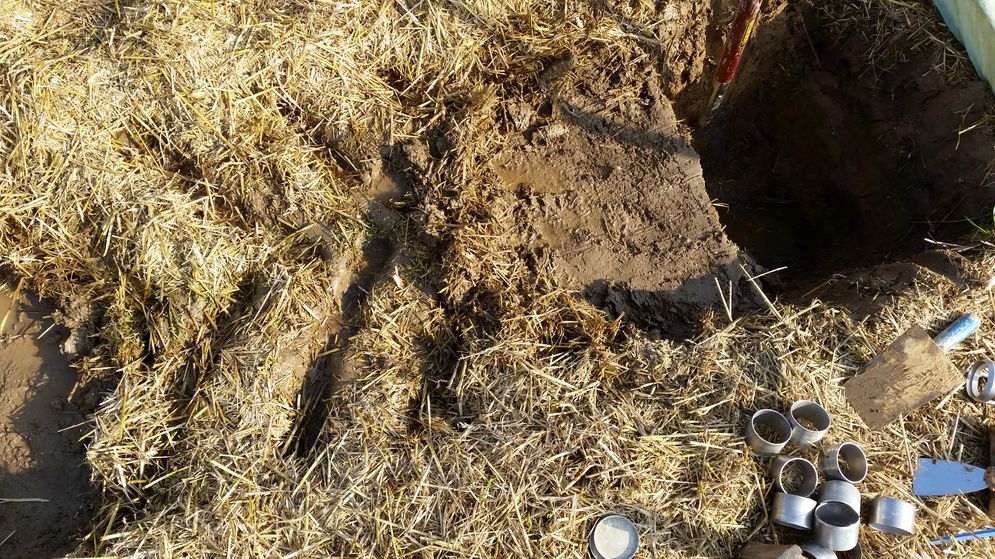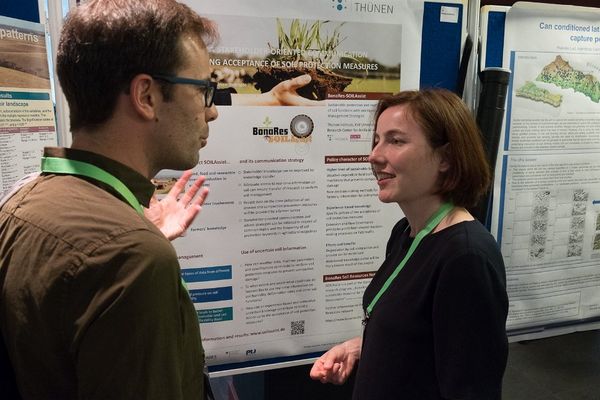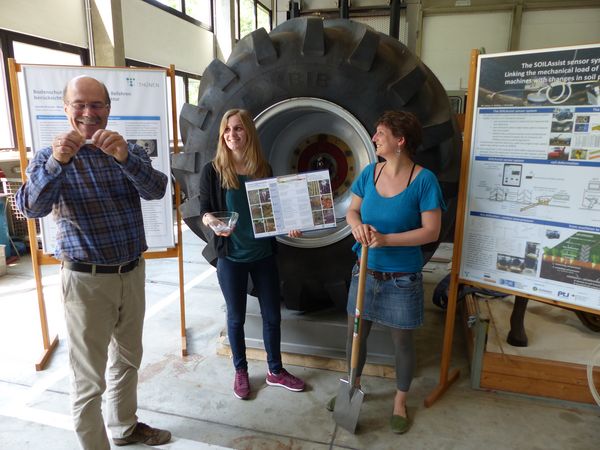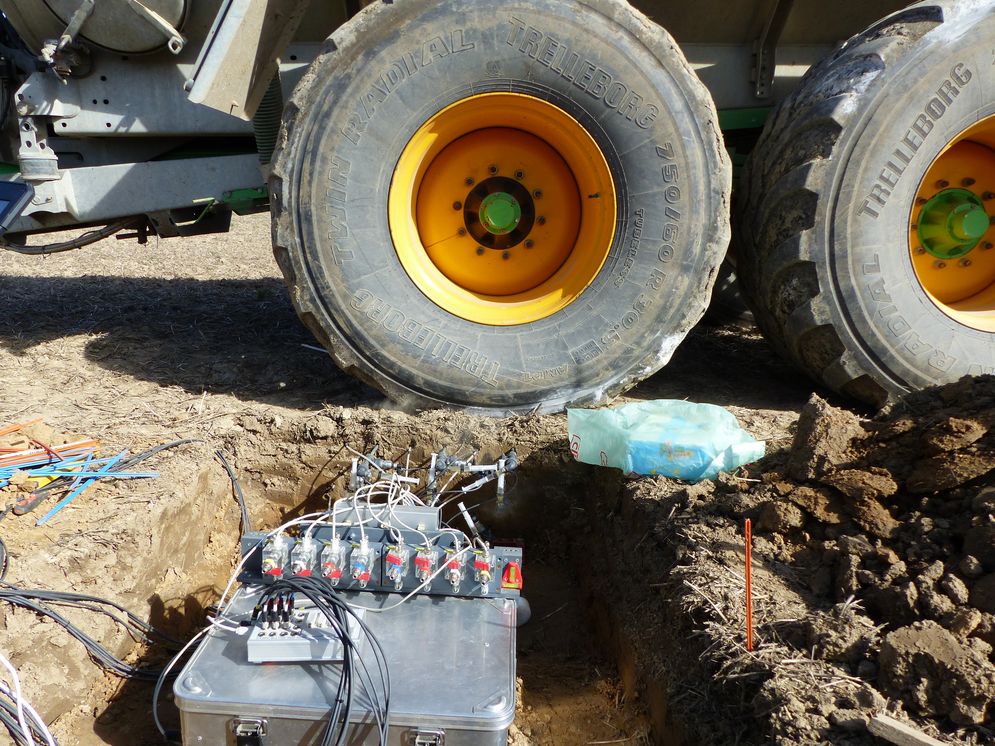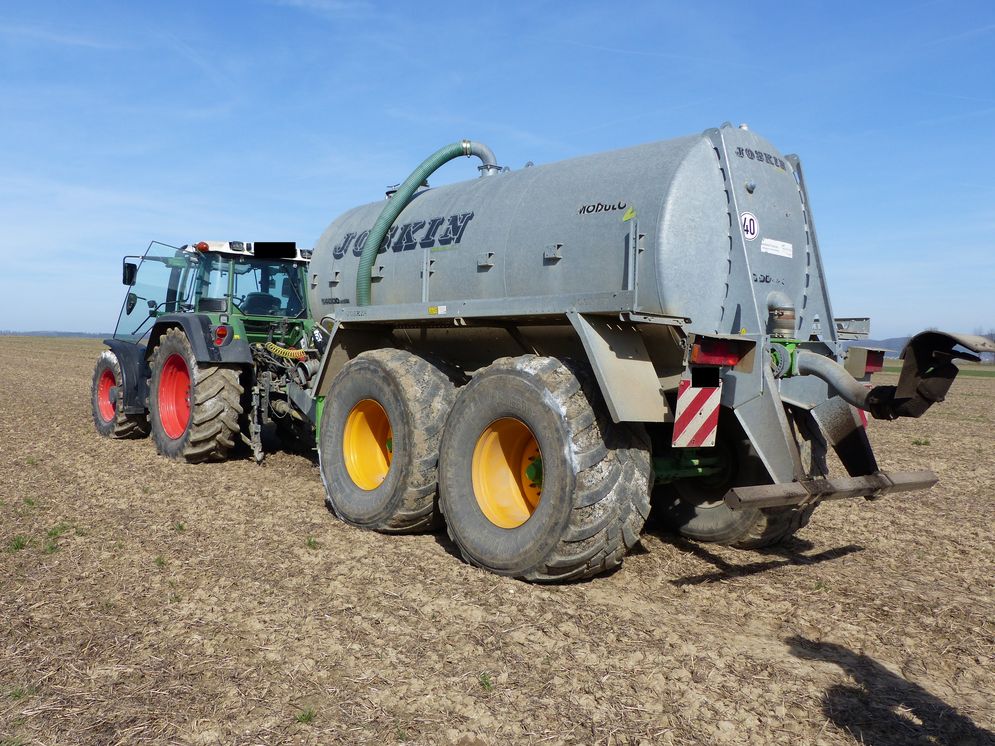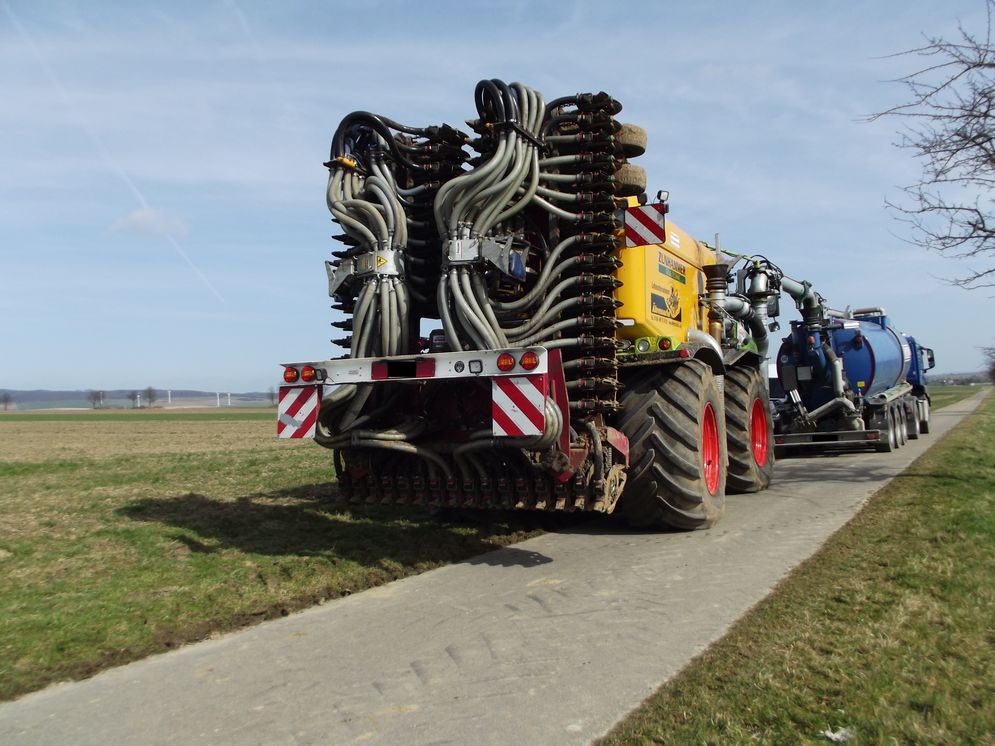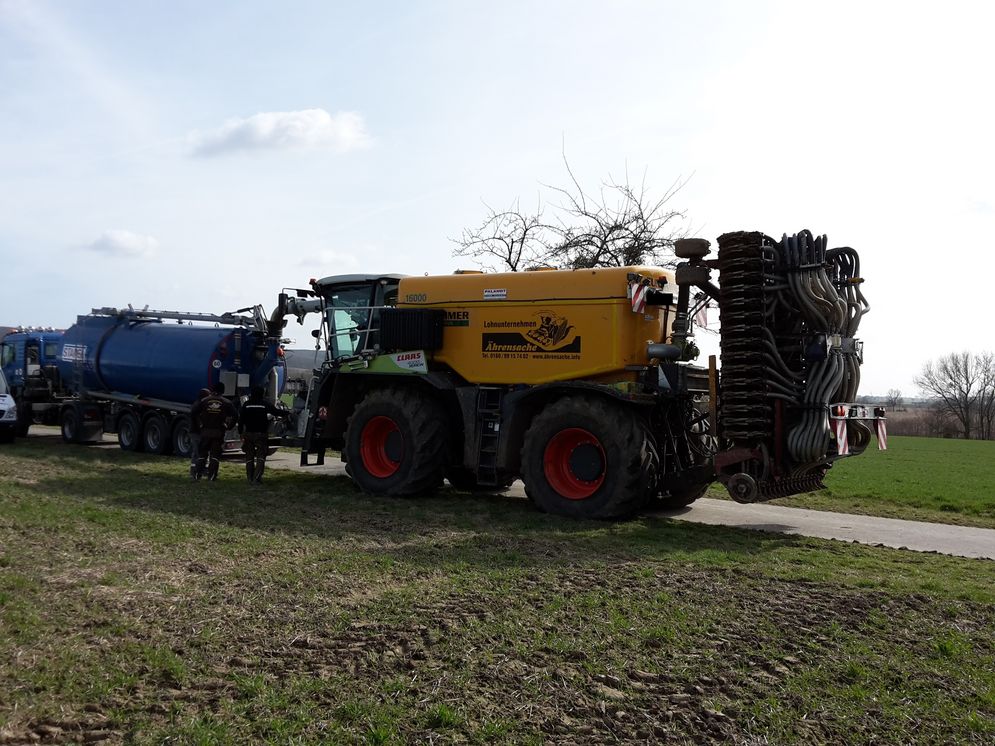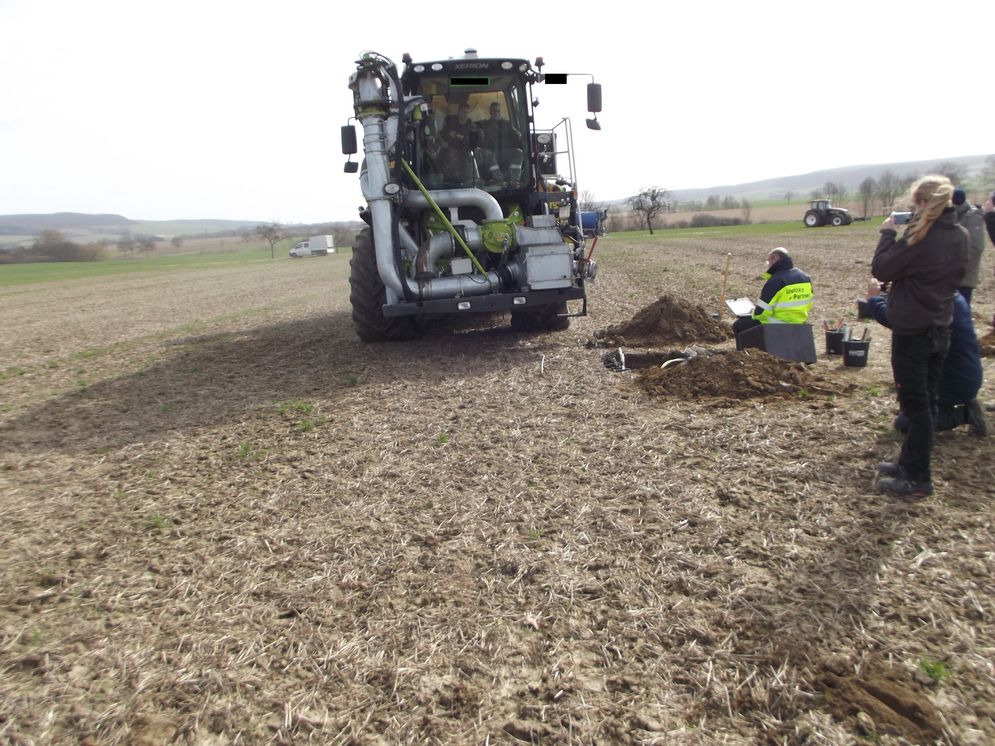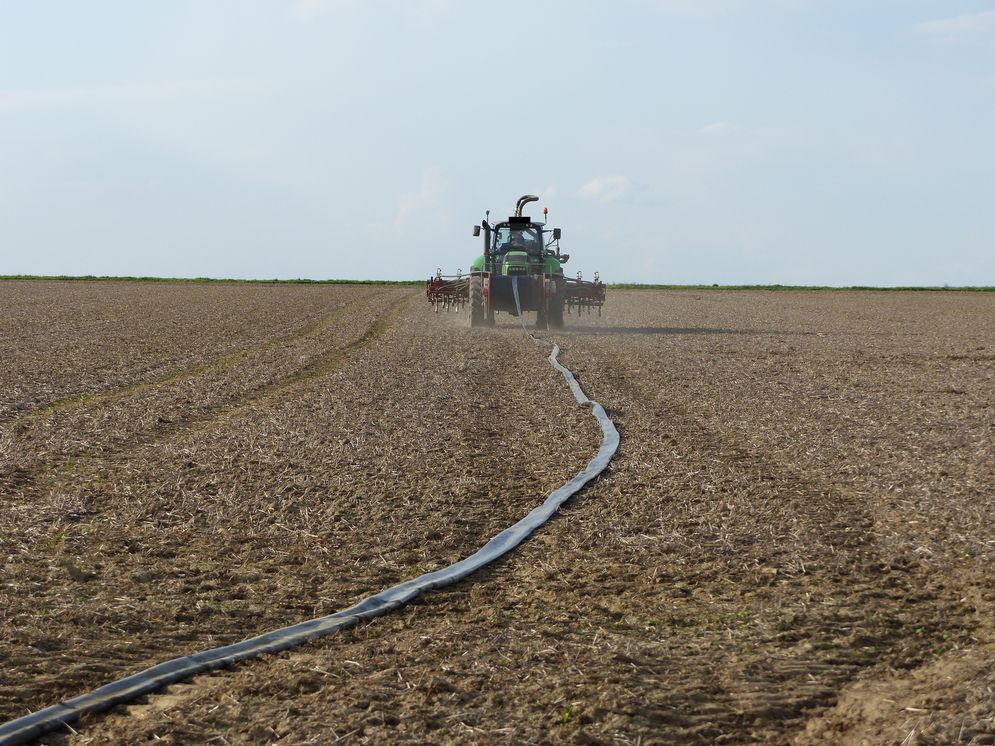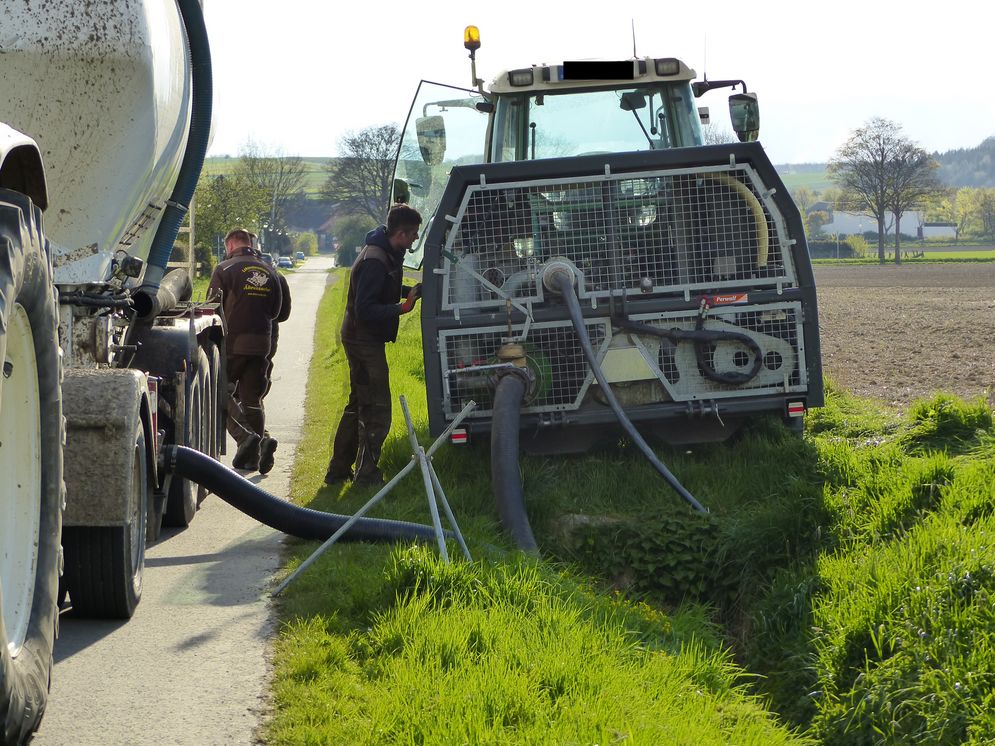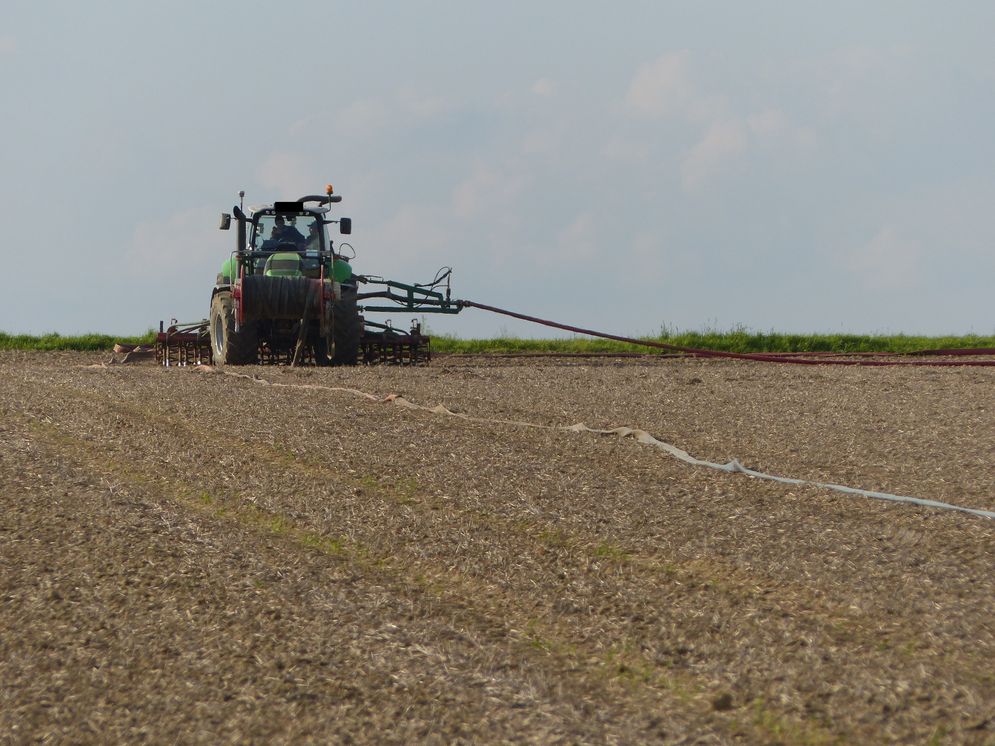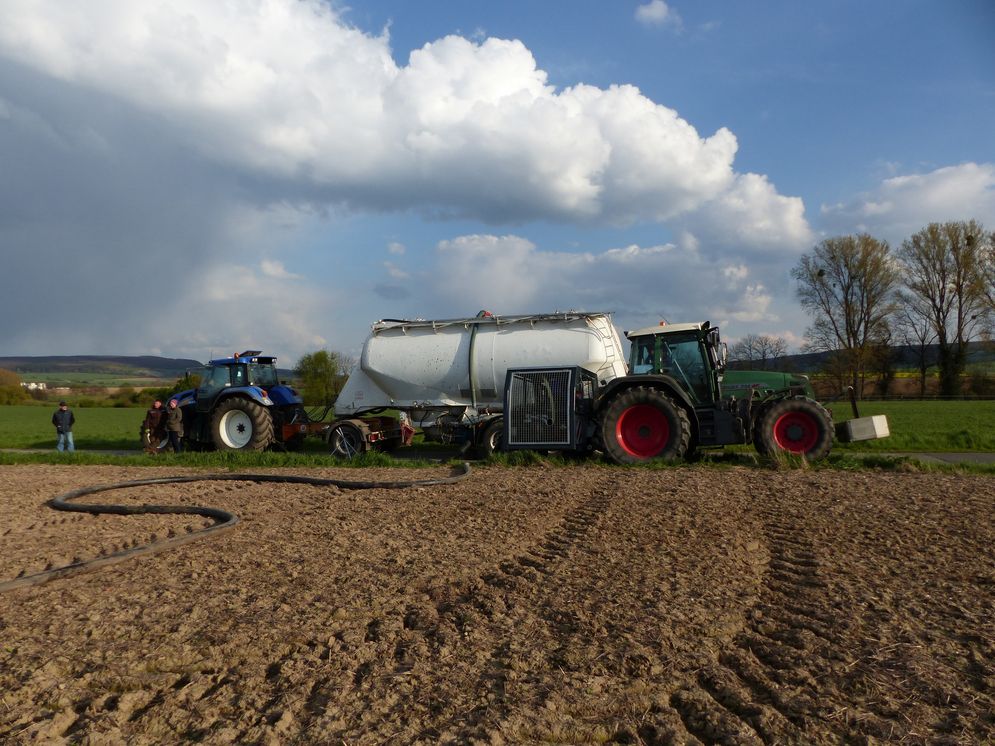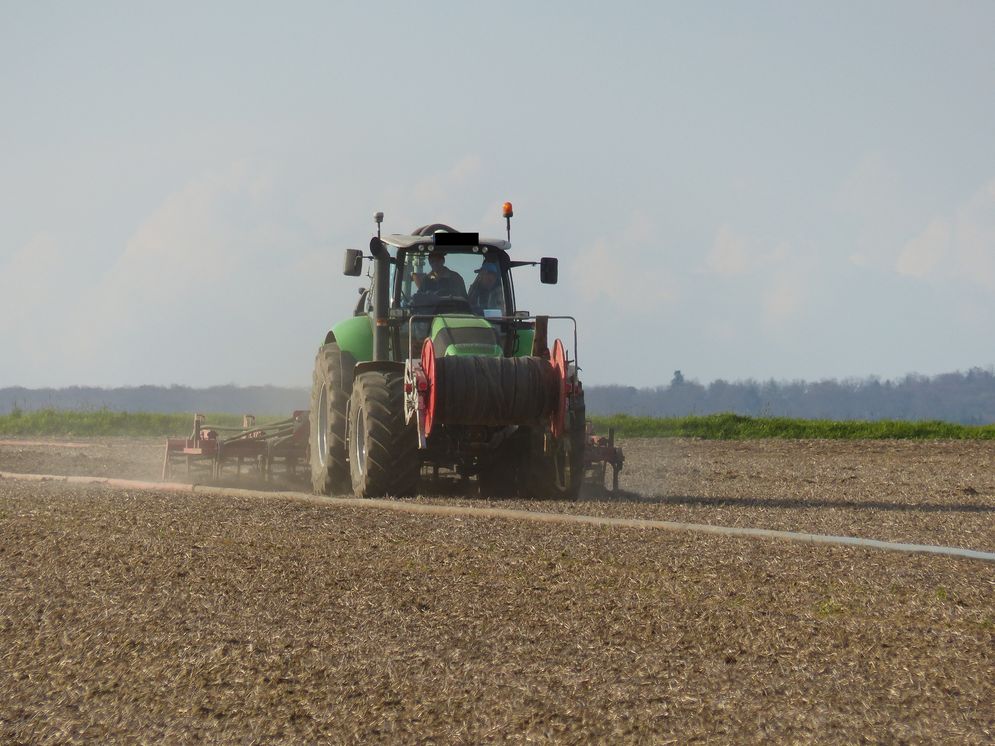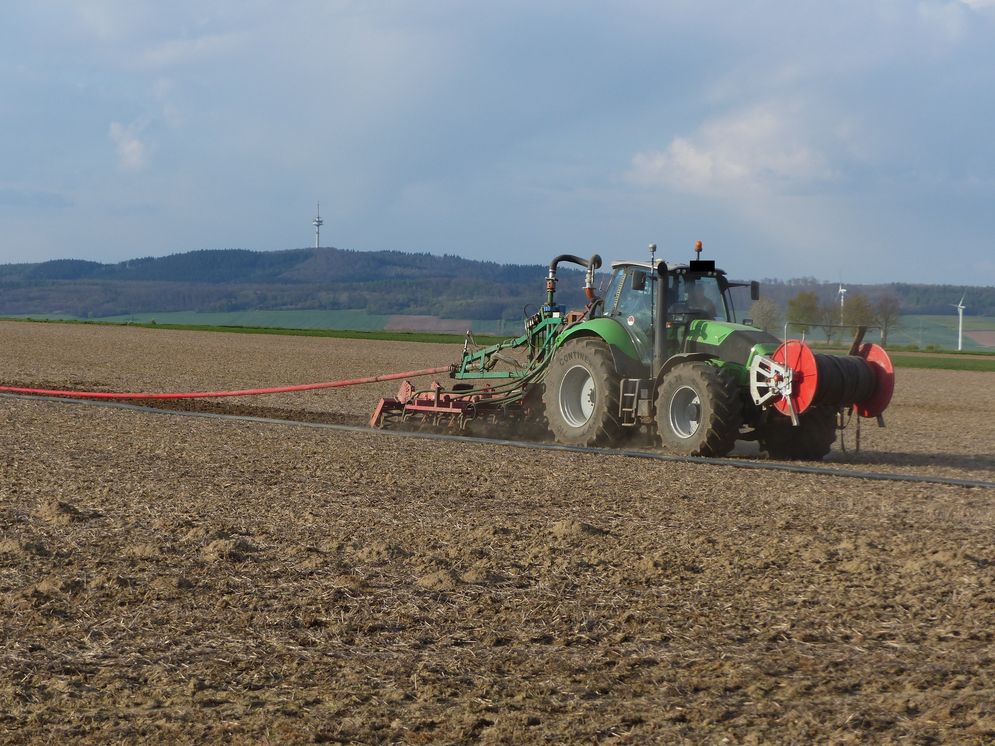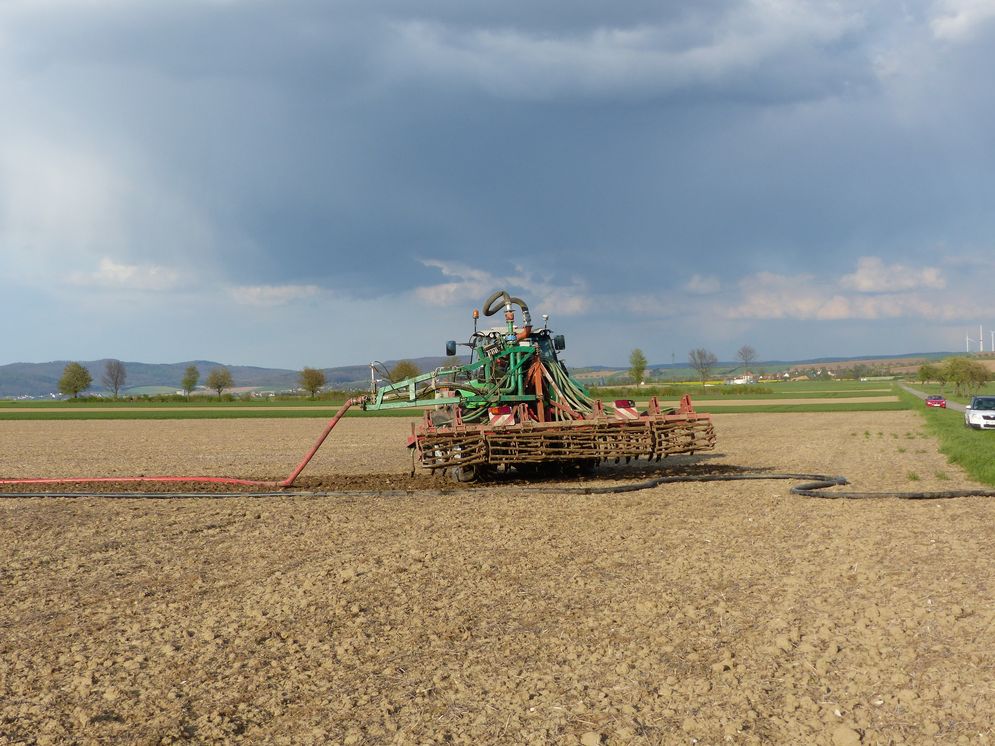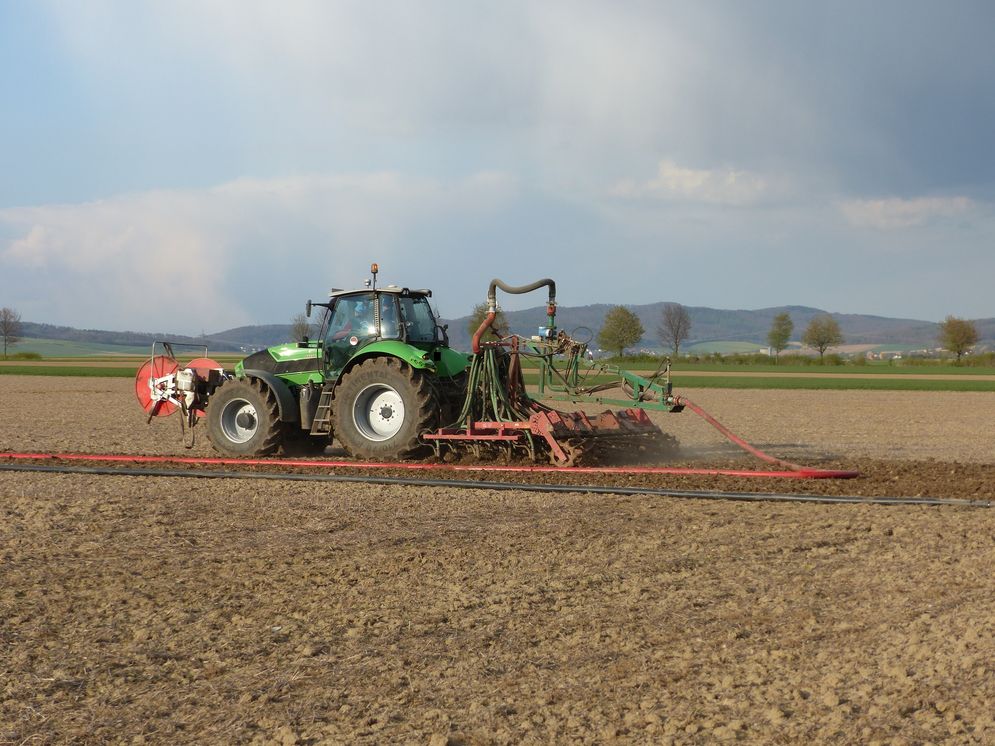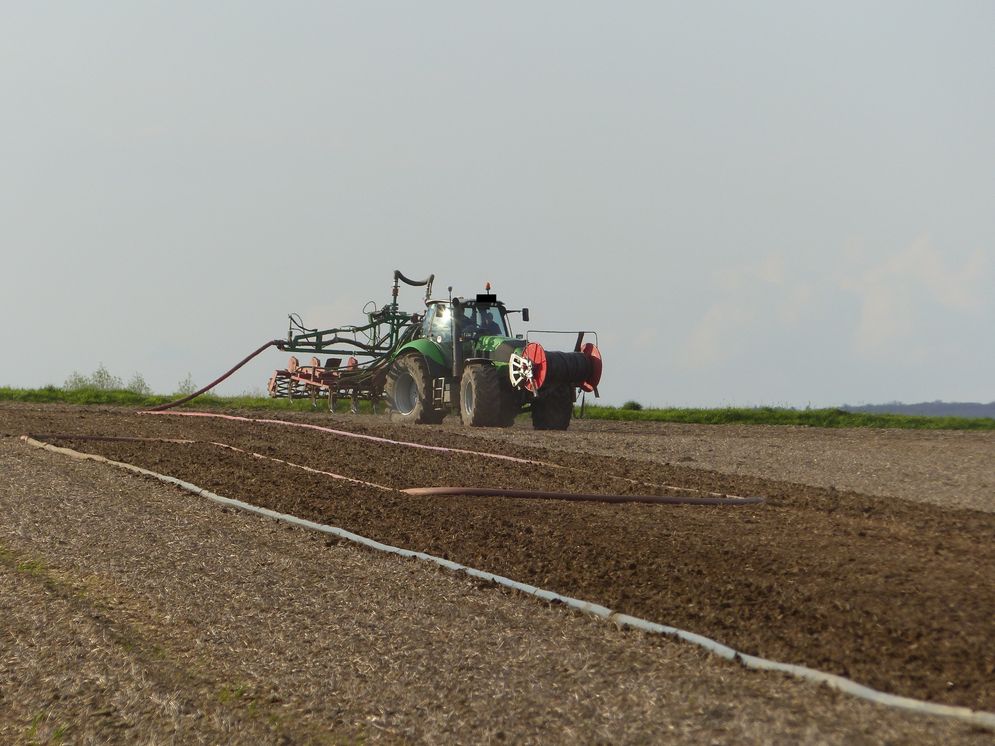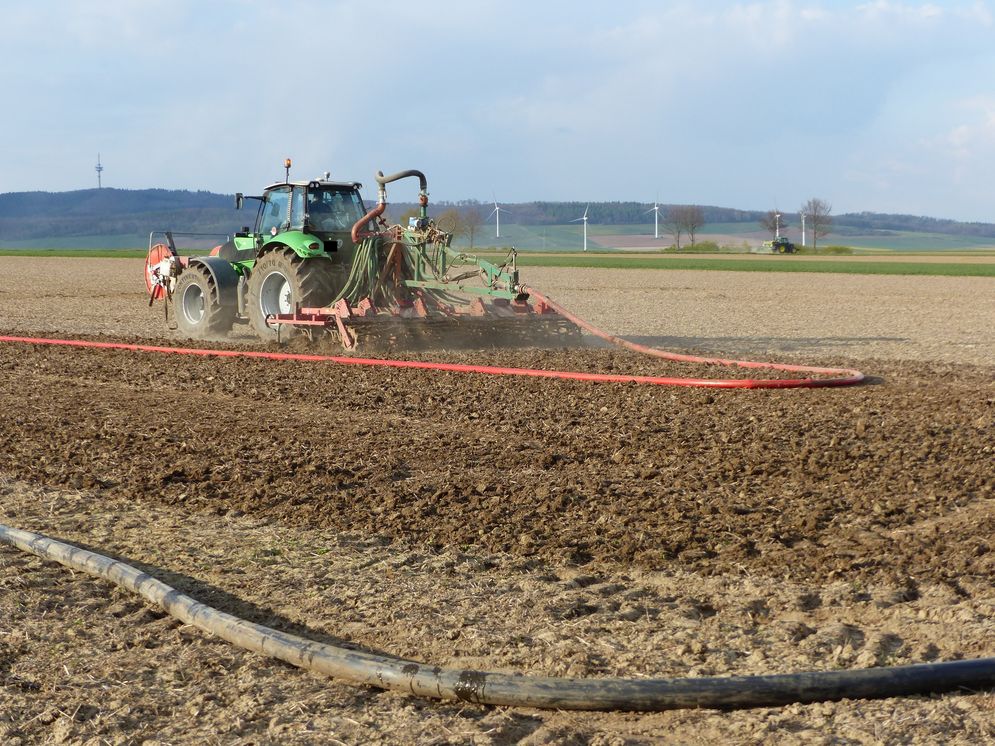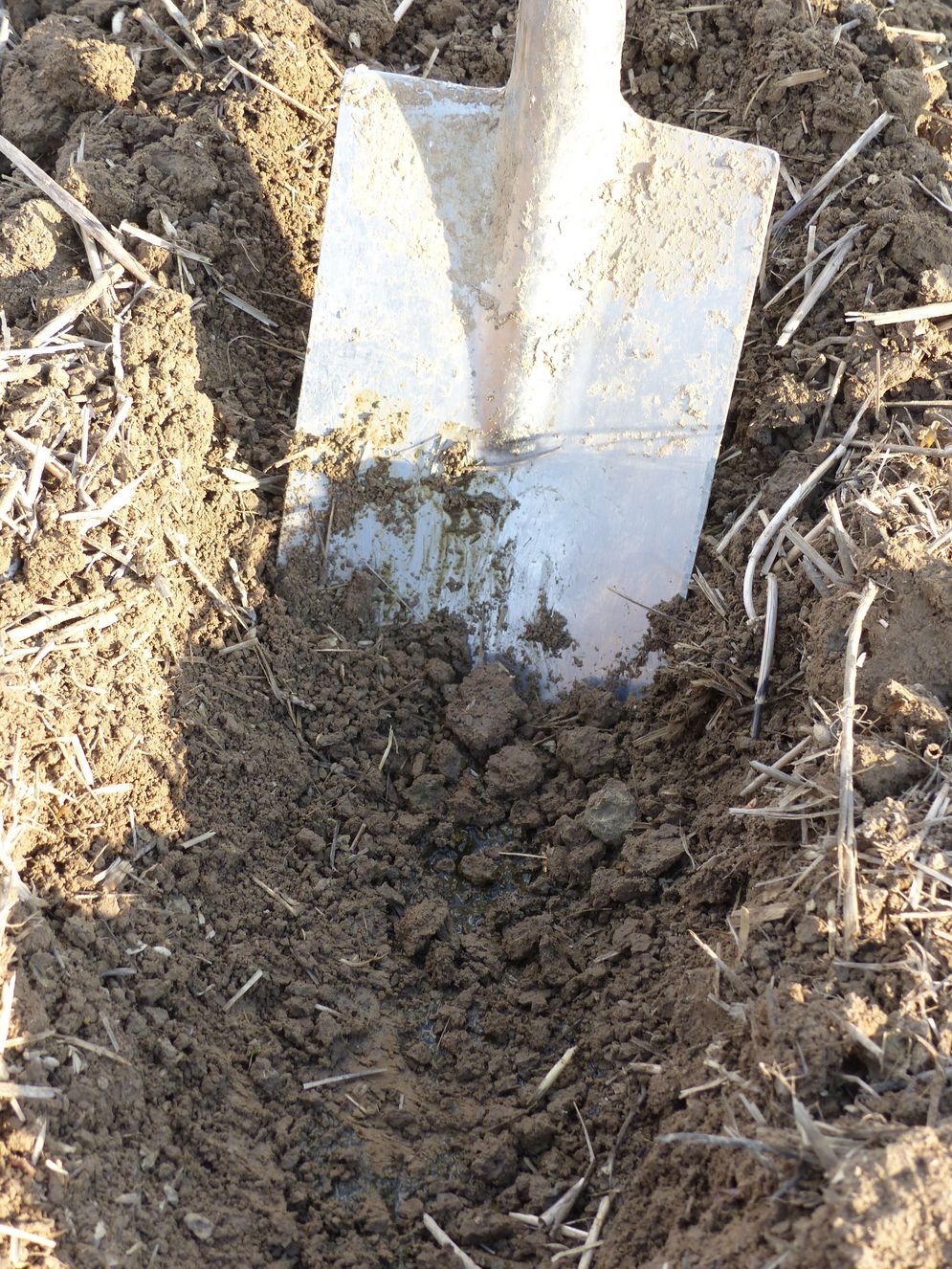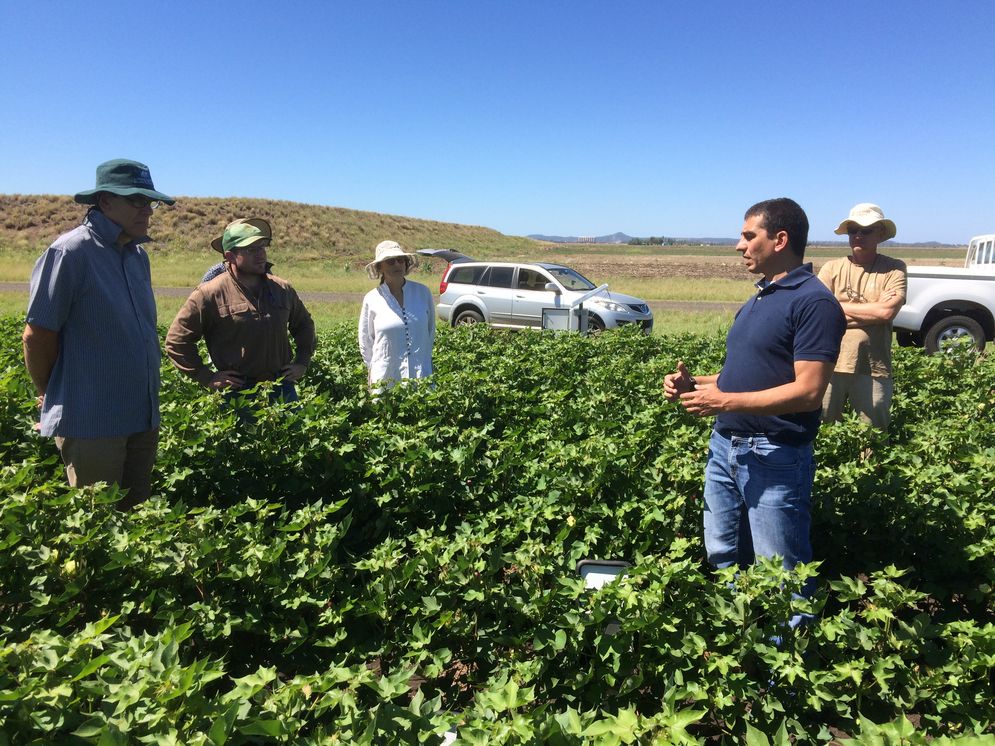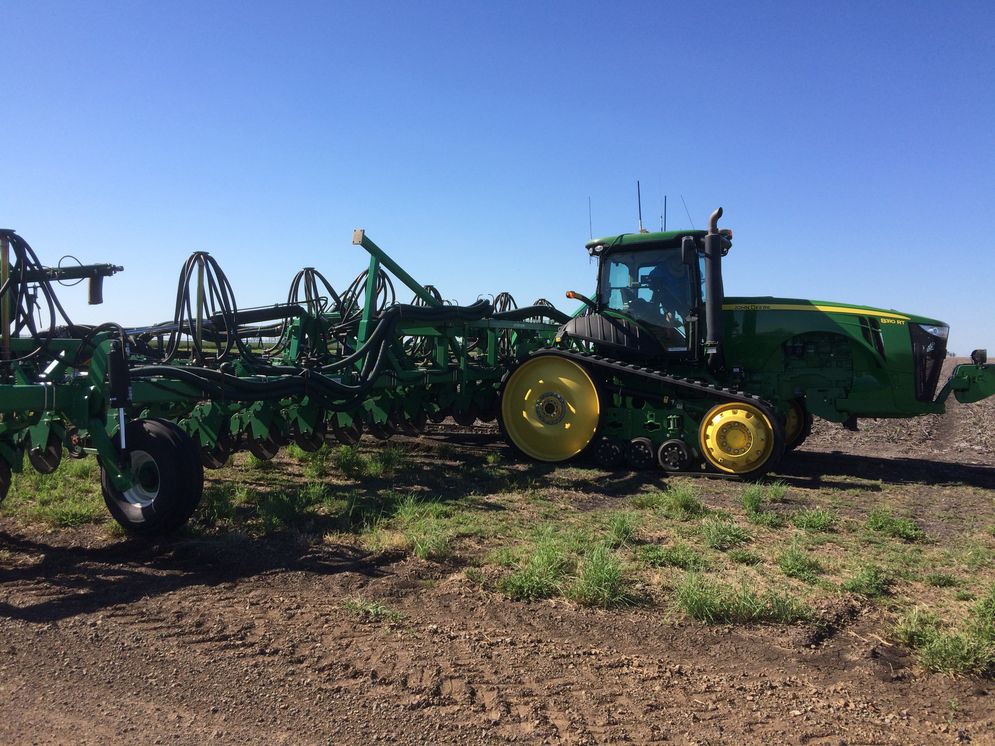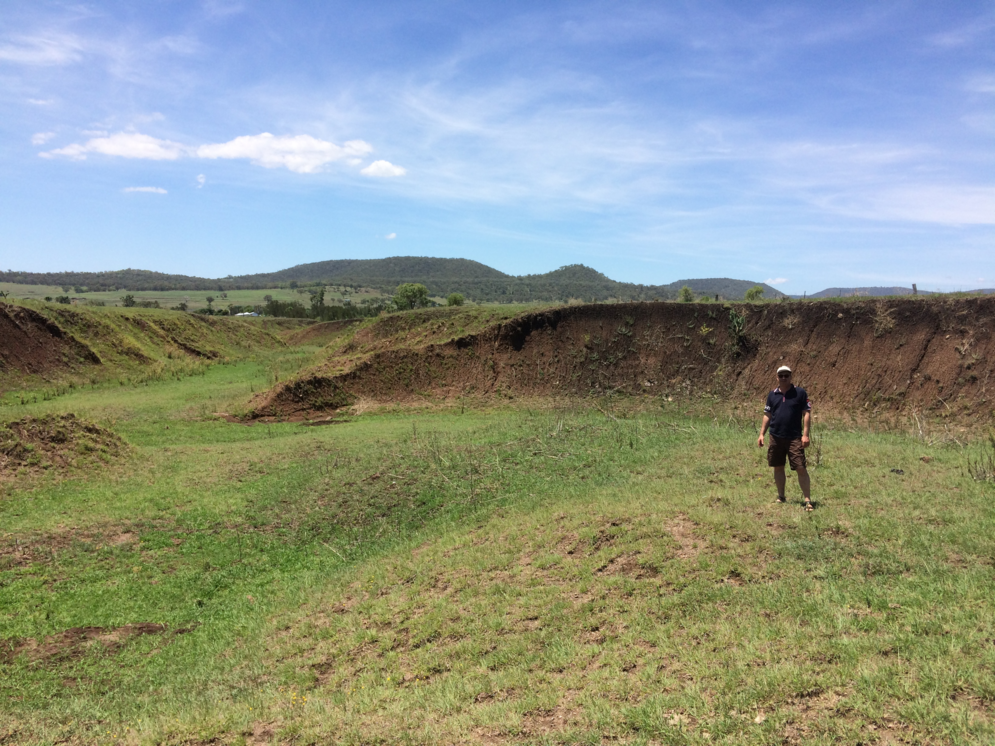Workshop 'amendment of the fertilizer ordiance and soil protection - a new field of conflict?' december 2017
Between optimized fertilization and soil protection - actors discuss soil pressure and slurry application
Thünen Institute and Lower Saxony Chamber of Agriculture hold workshop on 'Amendment to fertilizer ordinance and soil protection - A new field of conflict?'
In December, about 20 farmers, representatives of machinery rings/contracting companies and agricultural consultants discussed with employees of the Thünen Institute and representatives of the Lower Saxony Chamber of Agriculture the challenges and possible solutions for the implementation of the amendment to the Fertilizer Ordinance against the background of soil conserving cultivation. One of the aims of the amendment of the Fertilizer Ordinance (DüV) is to reduce emissions of fertilizer application to the air as well as to groundwater and surface waters. New regulations on the vesting period and on the limitation of application quantities will result in a postponement of the application quantities of farm manure until spring. The application of farm manure is associated with high wheel loads on the soil as a result of field traffic with large slurry tanks. In spring, the soils usually still have high water contents until March and are therefore very vulnerable to compaction. The new fertilizer ordinance will help to improve air and water protection. However, it can exacerbate the conflicts between optimized fertilization and soil protection.
The workshop took place as part of our SOILAssist research project and was jointly organized by the Thünen Institute and the Lower Saxony Chamber of Agriculture. The workshop demonstrated high importance and challenge of soil protection in fertilizer application. The greatest challenge is the shorter application window and the quantity restrictions. Technical solutions are required that allow soil conserving cultivation with the same performance. Above all, the additional financial burden, the availability of technology, for example for contractors, and the technical possibilities for slurry processing were critically discussed. The results of the workshop will be incorporated into further project work.
We would like to thank all participants for the active exchange and support.
Sugar beet harvest October 2017
On 30th of October 2017 the sugar beet harvest took place on our study fields.
The aim of this campaign was on the one hand to test how the available machine data from the ISOBUS can be used in the on-board assistance system later. The test was carried out under real conditions. Relevant data are e.g. GPS coordinates, driving speed, fuel consumption, information on the digging unit, etc. The reading out of specific machine parameters is especially important with regard to the on-board assistance system to be developed in SOILAssist. On the other hand, a calibration of an installed sensor in the REXOR 630 by Grimme was performed under real conditions. This sensor measures the increase of the volume of sugar beet in the bunker during harvest. The bunker weight can be determined by calibration with the current bulk density of the beets. The REXOR was weighed several times with a full bunker using portable scales. In addition, volumetric beet samples of approx. 1 m³ were taken with a cage to determine the current bulk density. This increases the accuracy of the sensor.
Together with the RTK GPS, the sensor can then be used to determine the axle and wheel loads at any point in the field and thus determine the different mechanical soil loads in the field during harvesting. To realize an exact traffic monitoring, the operating conditions of the machine, e.g. harvest condition and unloading of sugar beets at the clamp in the headlands etc. were documented during harvest.
Silage corn harvest September 2017
This year's silage corn harvest took place on the 13th of October 2017 on the SOILAssist study fields, after the harvest had to be shifted due to very rainy weather the week before. Compared to the extremely dry last year 2016, the silage corn harvest this year took place at significantly higher soil moisture conditions.
This year, we not only took photos, but also made videos of the silage corn harvest, overloading and the wheeling experiment.
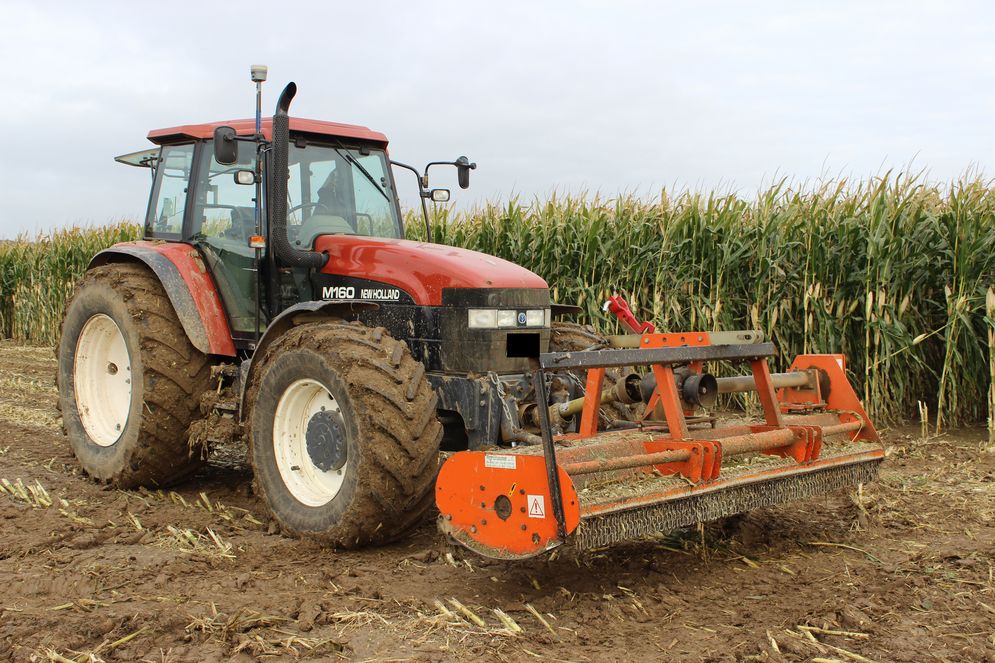
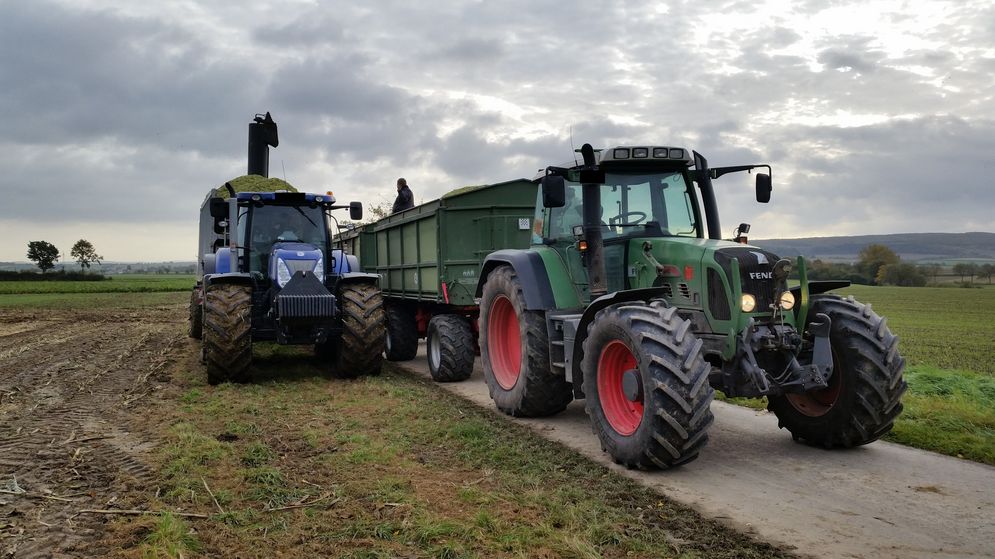
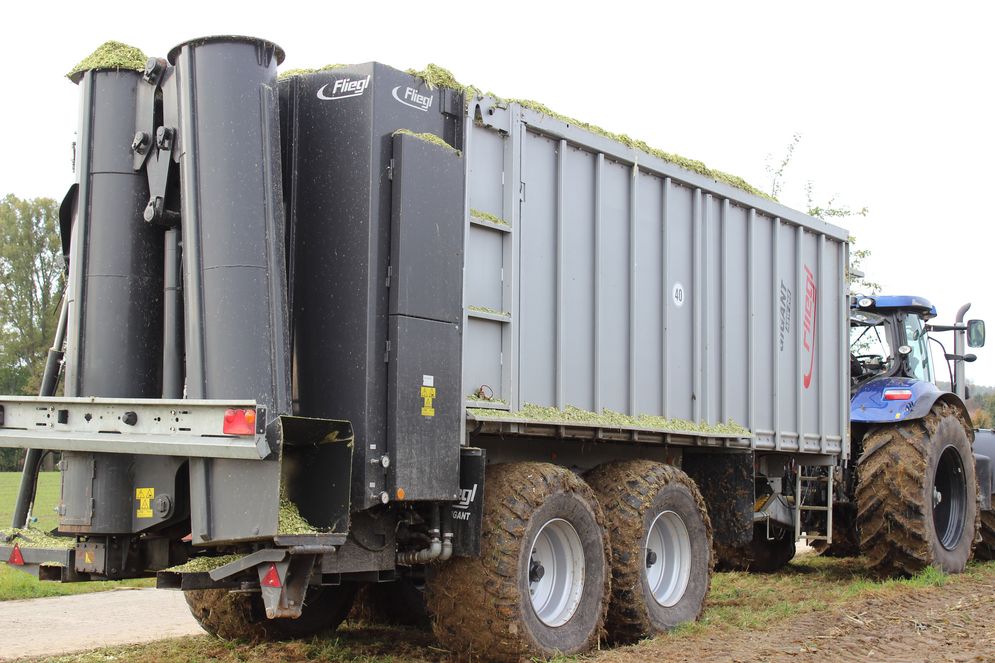
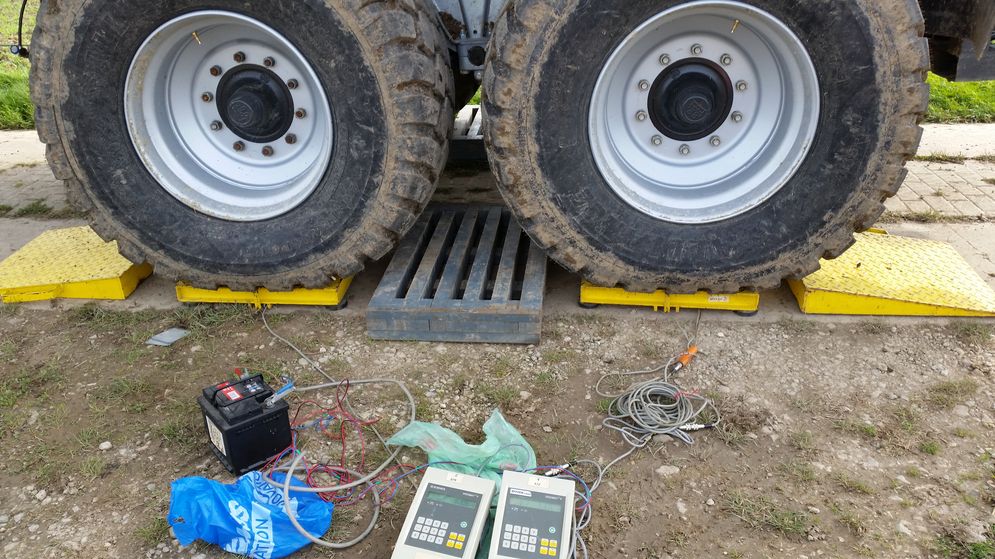
The harvest chain consisted of the chopper (FR 550) provided by New Holland, our test tractor (New Holland T7), a push-off trailer (Fliegl Gigant ASW 268) provided by Fliegl Agrartechnik GmbH and a tractor (New Holland M160) with mulcher (Agrimaster). The push-off trailer with overloading screw enables overloading of the chopped material directly at the edge of the field onto waiting trucks. This means that the tire inflation pressure can be significantly lowered compared to road driving, resulting in a more soil conserving field traffic under wet soil conditions.
To estimate the yield before the harvest, a hand harvest was carried out in advance. The SOILAssist scientists performed three different wheeling experiments during the silage corn harvest. First, the soil pressure and soil deformation of the entire harvest chain were measured. The chopper, the tractor with the push-off trailer and the tractor with the mulcher crossed the measuring point one by one. Subsequently, separate wheeling experiments were done in which the chopper and the tractor with push-off trailer were examined individually. Before and after the wheeling experiment, undisturbed soil samples were taken in order to determine not only soil pressure and deformation but also the influence of the field traffic on the soil structure and soil functions. In addition to the wheeling experiments, measurements were carried out with the penetrologger to measure the penetration resistance of the soil. Furthermore, the contact areas of the tires of the different agricultural machines were determined. Portable scales were used to determine the weight and wheel load of the individual machines, which is relevant for the experiments.
Tender for a master thesis in the project SOILAssist at the Thünen Institute for Rural Studies
Contact: Dr. Johanna Fick (johanna.fick@thuenen.de)
SOILAssist at the German Soil Science Society September 2017
In September 2017 scientists from SOILAssist participated in the conference of the German Soil Science Society in Göttingen.
Contribution: Development of a spatio-temporal soil information model for the drivability analysis of arable land (M. Kuhwald, K. Augustin, R. Duttmann)
Winter wheat harvest August 2017
Once again, this year, the SOILAssist study fields were used for extensive wheeling experiments and field trials during the winter wheat harvest. Even before the harvest, the scientists carried out a hand harvest of the wheat on various plots in the field and took soil samples from plots that are unwheeled.
The colleagues at the Christian-Albrechts-Universität in Kiel examined the impact in terms of cumulative traffic effects on the basis of the traffic movements of recent years. Different load classes on the field were calculated with the help of the field traffic model. The scientists tracked the plots with RTK-GPS and marked them on site. Together with colleagues from the Thünen Institute in Braunschweig, a targeted sampling of the soil was then carried out at different depths in order to subsequently examine it for soil physics.
Colleagues from the Thünen Institute of Agricultural Technology in Braunschweig carried out wheeling experiments with a New Holland TX 63 combine harvester. With the help of RTK-GPS tracking during wheat harvesting, it was possible to calculate that the combine harvester performs an average of two wheel crossings (one pass, two axles) in the core field and an average of eight wheel crossings (four passes) in the headlands. These two variants were imitated with the TX 63 with a full grain tank and soil pressure and deformation measured during the wheel crossing. The subsequent soil sampling was used for soil physical analysis in the laboratory.
In addition to the field tests, the scientists also recorded parameters such as the weight of the combine harvester, the tire contact areas, the track depth and the penetration resistance of the soil.
Latest publication August 2017
Kuhwald, M., Blaschek, M., Brunotte, J. and Duttmann, R. (2017)
Soil Use and Management, DOI: 10.1111/sum.12372.
SOILAssist at the Wageningen Soil Conference August 2017
SOILAssist participated in the Wageningen Soil Conference 2017 from August 27th to 31st on the campus in Ede-Wageningen. The biennial Soil Conference at Wageningen University & Research (WUR) was held this year under the motto Soil Science in a Changing World. One of the six main topics focused on Governance and Policy.
Governance & Policy was an important topic at the Wageningen Soil Conference. After keynote speeches by Annette Schneegans (European Commission, DG AGRI) and Simon Moolenaar (Commonland Foundation), BonaRes SOILAssist opened the governance session with a speech by Kirstin Marx (Soil Unit of the Thünen Institute) and Marco Lorenz (Thünen Institute for Agricultural Technology) on SOILAssist - Assisting Farmers to reach the SDG Goals 12 and 1.
SOILAssist at the Pedometrics June 2017
In June 2017 scientists from SOILAssist took part in the Pedometrics in Wageningen.
SOILAssist at the EGU April 2017
In April the scientists of SOILAssist were participating in the conference of the European Geoscience Union (EGU) in Vienna with 3 contributions in different sessions.
Contributions: An application to model traffic intensity of agricultural machinery at field scale (K. Augustin, M. Kuhwald, R. Duttmann)
The effects of one-time inversion tillage on soil physical properties after long-term reduced tillage (M. Kuhwald, K. Augustin, R. Duttmann)
Effects of different agricultural management on a stagnic Luvisol in Lower Saxony, Germany – Factors for sustainable soil protection (M. Lorenz, M. Siekmann, J. Brunotte, B. Ortmeier)
Fermentation Residue Application March 2017
On our SOILAssist study fields, extensive measurements on different manure and fermentation residue application techniques for silage corn were carried out from the 14th to the 17th of March 2017. The aim of these investigations was to examine the influence of different application techniques on soil structure and changes in soil functions. Especially in spring, when liquid manure is applied and will be increasingly used due to changes in the fertilizer ordinance, the soils often show a higher soil moisture value, which is critical for soil compaction. The choice of technology and the correspondingly adapted machine parameters are crucial to ensure that the field traffic is as gentle on the soil as possible. The investigated technology variations represent the range of slurry application in practice:
- Tractor with tandem slurry tank (without incorporation)
- Self-propelled slurry tank with crab steering function and slurry injector with cutter
- Tractor with umbilical cord slurry spreading
To ensure clean soil sampling, no fermentation residues were applied during the measurements. The self-propelled slurry tank and the tractor with tandem slurry tank were driven over the measuring point with a full tank but without spreading the fermentation residues; so was the tractor with the umbilical cord slurry spreading as well.
The final fertilization of the field was carried out with the umbilical cord slurry spreading technique before sowing of silage corn.
Experience exchange in Australia January 2017
In January, the SOILAssist project was presented at the University of Southern Queensland (Toowoomba). Purpose of the trip to Australia were exchange of experiences and networking on topics of soil erosion and soil compaction. Contact person on the Australian side was Dr. Christian Roth from the CSIRO (Commonwealth Scientific and Industrial Research Organization) in Brisbane.
Our project leader Dr. Joachim Brunotte (Thünen Institute of Agricultural Technology in Braunschweig) was especially interested in obtaining an overview of CTF systems (Controlled Traffic Farming) in Australian crop rotations and their applicability to European conditions. This included a visit to the University of Southern Queensland in Toowoomba and a round trip to practical farms in the region to study the special application situations on site.
At the university Dr. Brunotte presented our concept "Adaptation of Load Input by Agricultural Machines to the Susceptibility of Soil to Compaction" to the Australian colleagues (Dr. Jeff Tullberg, Dr. John Bennet, Dr. John Rochecoueste, Erik Schmidt) to reduce soil compaction. Mr. Brunotte's presentation was titled "Paddocks under pressure - adaption of machinery use to the compaction sensitivity of arable soils" and outlined essential contents of SOILAssist.
